This article has been written by Diksha Shastri. The article covers the entire process for the constitutional amendments in India and lists down the most important constitutional amendments over the years with their impacts and repercussions, leading to landmark judgements by the Supreme Court. It covers the entire journey of the constitutional amendments, from the first till the most recent constitutional amendment, that is, the 106th Amendment.
Table of Contents
Introduction
Right after India’s independence, the drafting of the Indian Constitution began. Were you aware that the fundamental right of freedom and expression had no restrictions to it in this first version? That’s interesting, right? Then, how do you think those reasonable restrictions were imposed?
Any amendment that is brought to the Indian legal system must be in accordance with the Constitution of India (hereinafter referred to as “the Constitution”) which governs all the entire republic of India.
So, what happens when a change is much needed in the nation of India, but the existing Constitution does not express anything about it? The answer lies in the amendment of the Constitution. By amending the Constitution, the legislative framework can be changed. This article also explains the extent to which the legislative framework and the Constitution can be amended in India.
This article covers an in-depth study of all the important constitutional amendments in India, till date. So much history lies behind making the Constitution as it is today, let’s take a journey and see how it all started!
What is meant by constitutional amendment
Any change or modification to the Constitution of India is known as a constitutional amendment. For a constitutional amendment to take place, the Parliament has to follow the process set by the provisions of the Constitution. An amendment takes place by making a change in a particular provision by adding new information or omitting the previously existing information.
Different ways to amend the Constitution of India
As the Constitution is the most important legal document that also governs the entirety of our nation, it is vital that the amendments take place only after careful consideration. As a result, the amendment of our Constitution is treated differently than the amendment or changes to an ordinary law.
Article 368 allows the Parliament for three different types of constitutional amendments :
- Voting by a simple majority of both the houses of the Parliament;
- Voting by a special majority of the Parliament; and
- Lastly, for the special provisions mentioned earlier: voting by special majority and expressed consent of half of State legislatures, by simple majority.
Procedure to amend the Constitution of India
For the three types of amendments mentioned above, the following procedure is followed:
Amendment with a simple majority
As per Article 368, some of the provisions of the Constitution can be amended by obtaining a simple majority of members present and voting. A simple majority means that 50% of the members present and voting must vote in approval of the proposed amendment.
The following type of provisions can be amended through a simple majority:
- Establishing a new state under Article 2;
- Alteration of boundaries in areas and states;
- Formation or abolishment of Legislative Councils of a state;
- Alteration of names of existing states; and more.
Special Majority of the Parliament
In other cases, where the subject of amendment is a bit more complex, a special majority of the Parliament is required. A special majority of the Parliament involves two things:
- Majority of more than 50% votes in favour of the amendment from total members in each House of Parliament; and
- two-third majority of each House present and voting.
Special Majority is required in the following circumstances:
- To change the provisions of the Constitution without hampering the basic structure;
- To remove the judges of High Courts and the Supreme Court;
- To remove the Comptroller and Auditor General (CAG) of India; and
- For matters pertaining to national emergency.
Special Majority with ratification by state legislatures
Any changes to the provisions of the Constitution that relate to the federalistic nature and the polity of India, must be passed only after obtaining consent of at least half of the state legislatures through a special majority.
Following type of changes need a ratification of the state legislatures:
- Presidential Elections;
- Scope of power of the Union and states; and
- Any provisions related to the Supreme Court, High Court of any state, etc
Keynote: for any type of amendment of the Constitution, it is mandatory to pass the Bill in each House of the Parliament separately.
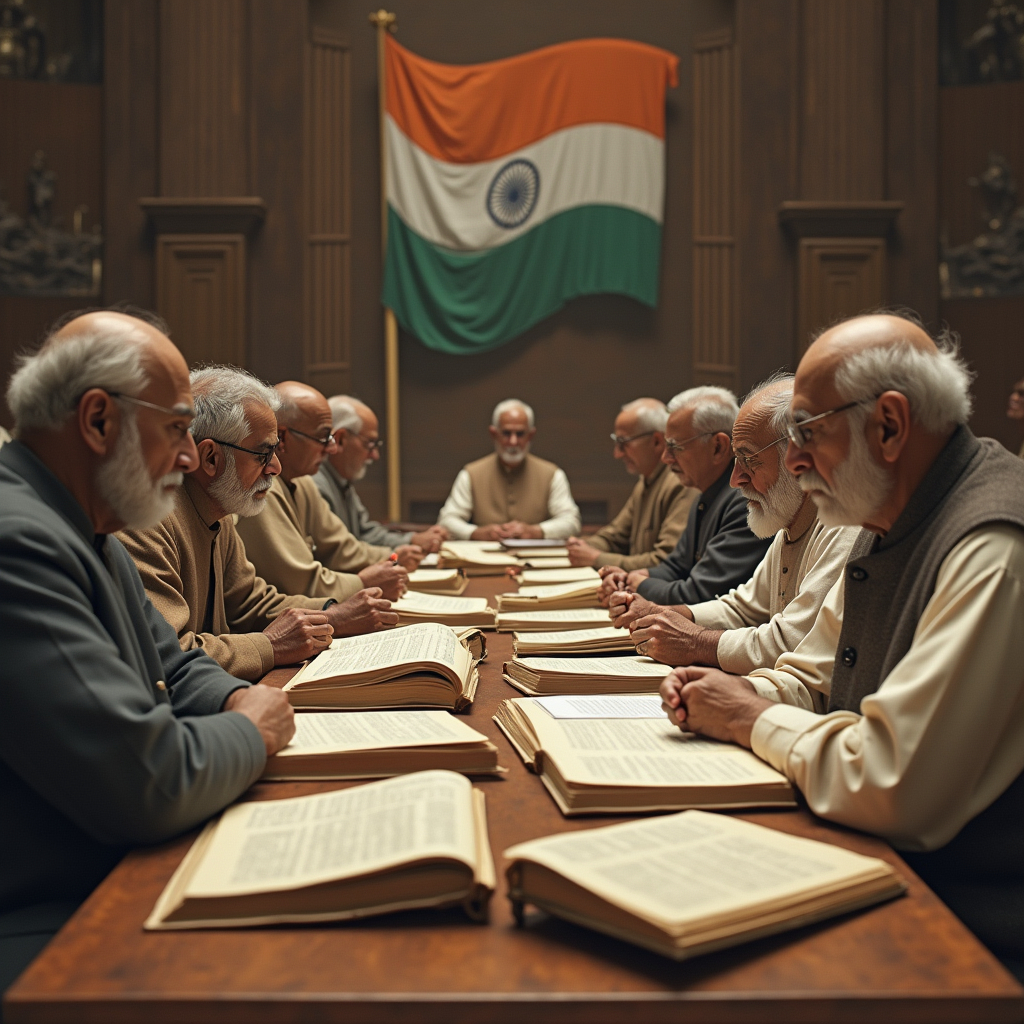
A brief history of constitutional amendments in India
Soon after the independence of India, the Indian Constitution was adopted by the Constituent Assembly in November 1949 and further came into force on 26th January 1950.
No later than 15 months of its inception by India, multiple issues were faced due to a lack of restrictions of rights. Due to this, the need to amend the Constitution for the first time was felt. Hence, Article 19(1)(a) was changed very heavily to incorporate these restrictions and bring social order by enactment of the Constitution (First Amendment) Act, 1951.
Since then, there have been a total of 106 Constitutional Amendments passed in India. While the journey of constitutional amendments began with bringing about socialist and welfare reforms, and to promote equality, soon, the extent of powers, the basic structure of the charter document was also being changed. Many of the constitutional amendments have faced serious criticism over the years, many have been repelled, and many have brought about positive changes. Let us take a look at the entire list of all important amendments to the Indian Constitution.
List of important amendments of Indian Constitution
Now that we have understood the scope of the power of Parliament to amend the Constitution in brief, it’s time to take a look at the list of most important amendments until now. There have been over 100 constitutional amendments . Moreover, from the above case laws discussed in brief, we can also get an idea that these amendments have more or less sparked controversies and brought about significant changes and improvements to the overall Indian legal framework.
Constitution (First Amendment) Act, 1951
This wasn’t the only change in the fundamental rights brought through the important Constitutional Amendment of 1951. “Interest of the general public” was also added to Article 19(6) in the freedom to practise trade and profession.
Another important aspect of the First Constitutional Amendment was to add provisions in order to secure the validity of the zamindari abolition laws set up at the time. Let’s see a list of all amendments brought through the First Constitutional Amendment for a better understanding:
- Article 15: Article 15 was amended to allow the State, irrespective of the provisions in Article 29 to make special provisions for the betterment of socially and educationally backward citizens, Scheduled Castes (SCs) and Scheduled Tribes (STs) in India.
- Article 19: Without any reasonable restrictions on the fundamental right to free speech, its abuse increased. In order to eliminate this abuse, the provision was revised to ensure that the fundamental rights are not absolute.
- Insertion of Article 31A: The Article was inserted to protect certain laws that would be passed for acquisition of property, to be valid even if it infringed upon the fundamental rights enshrined.
- Article 31B: New Article 31B was also inserted to validate certain Acts and Regulations. As per this article, no law passed under the Ninth Schedule would be held void on any ground of inconsistency by any type of judgement of the court.
Constitution (Second Amendment) Act, 1952
After the population census of 1951, it was found that the population within the states and territories was not in accordance with the President’s order. As a result, there was a need to readjust the territories.
In 1952, the Constitution (Second Amendment) Act passed to make changes in the number of members elected in the House of the People, which means the Lok Sabha. These changes were proposed to meet the requirements for various Union Territories (UTs) in India. Article 81, which provides for the Constitution of the House of the People was amended to relax the upper limit of members in the House of People, for the purpose of readjustment of the states. Before the amendment, Article 81(1)(b), each state was divided into the territorial constituencies and not less than one member was selected for a population of 7,50,000 and not more than one was selected for the population of 5,00,000. For the purpose of readjustment, and to make the representation of states better, the upper limit of not less than one member per 7,50,000 population was omitted.
Need for the 2nd Constitutional Amendment
This Bill was introduced in the Parliament in June 1952, because there was a need to reduce the upper threshold for maximum population for a seat in the Parliament. Before this important amendment to the Constitution of India, the total number of members allowed in the Lower House of Parliament was 500. Moreover, it also stated that one member represented more than the population of 7,50,000 people. However, with the changing trends of population in the country, post independence, it was necessary to let go of this maximum limit, as a result of which Article 81 of the Constitution was to be amended.
Important provisions of the Second Amendment
Coming into effect on 1st May 1952, the second constitutional amendment provided for the amendment of Article 81(1)(b) to omit the words “not less than one member for every 7.5 lakh population”, that is the upper limit or maximum limit on the population.

Constitution (Fourth Amendment) Act, 1955
In the early years of independence and establishment of the Constitution, there was a great disruption because of the conflict between right to property and abolishment of the zamindari system. In 1955, the Constitution (Fourth Amendment) Act, 1955, was passed to include all the laws passed for abolishing the zamindari system that would fall under the Ninth Schedule to the Constitution. It is a special provision that protects certain laws listed in it, from the scope of judicial review. These laws were majorly related to the acquisition of lands and the compensation provided in exchange for such acquisitions. For this purpose, Articles 31 and 31A were amended (after the recent wide interpretation of Article 31 in a recent judgement by the SC).
Purpose of the 4th Constitutional Amendment
Due to certain recent decisions of the Supreme Court of India in 1955, the need was felt to amend many provisions of the Constitution to eradicate the ambiguity in wordings, especially conferring on Article 31. The statement of objects and reasons to this Act denotes that even though the wordings in the two sub-clauses of Article 31 were different, the interpretation of the Supreme Court was the same. Hence, there was a need to improve the clarity in the wordings of Article 31.
Moreover, this Amendment Act also served the following purposes:
- To facilitate the land reform measures over the agricultural land in India;
- Improve the planning for urban and rural areas in the country and to remove the slums; and
- For the interest of the greater public, for facilitation of take over of a commercial or industrial undertaking.
Important provisions of the 4th Amendment
Many provisions of the Constitution of India were amended as well as added as a part of this Act. Let us take a look at the various changes in depth:
Changes in Article 31
The amendment of Article 31 as per the Act, removed the fundamental right to property and switched it to a legal right. This was done to facilitate the abolishment of the Zamindari system.
New Article 31A
This Article was introduced to protect certain laws from being held as unconstitutional under Article 13. The following types of laws were included:
- Laws for the acquisition of estate by the State and the payment of compensation;
- Take over of property management for a limited period by the State;
- Amalgamation of corporations; and
- Modification of shareholders, etc.
All of the laws in relation to the above objectives, were granted protection under this new article against being held as unconstitutional on the grounds of inconsistency with the fundamental rights under Articles 14 and 19.
Article 31B
This article was introduced to validate certain acts and regulations passed by the Parliament and specified in the Ninth Schedule. It validated certain laws passed for the furtherance of the land reforms passed by the governments of various states.
Article 39(b)
Sub-clause (b) of Article 39 was added to facilitate the directive principles of state policy by stating that the concentration of wealth and resources was to be avoided at all costs through various implementations.
Amendment to the Ninth Schedule
The ninth schedule was amended to introduce the following Acts:
- The Bihar Displaced Persons Rehabilitation (Acquisition of Land) Act, 1950;
- The United Provinces Land Acquisition (Rehabilitation of Refugees) Act, 1948;
- The Resettlement of Displaced Persons (Land Acquisition) Act, 1948;
- Certain provisions of the Insurance Act, 1938;
- The Railway Companies (Emergency Provisions) Act, 1951;
- Chapter III-A of the Industries (Development and Regulation) Act, 1951; and
- The West Bengal Land Development and Planning Act, 1948.
Constitution (Seventh Amendment) Act, 1956
This Act falls under one of the most important amendments to the Constitution of India as it introduced the concept of Union Territories in India. After the independence of India, there have been time and again instances of reorganisation of States. Within the first few years, a states reorganisation committee was set up, under which suggestions were given. The Constitution (Seventh Amendment) Act, 1956 was enacted to implement those suggestions.
Importance of the 7th Amendment
The States Reorganisation Act, 1956 was passed on 31st August 1956 to introduce 14 states and 5 union territories. This had led to riots and conflicts, resulting in the division of the States of Gujarat and Maharashtra, and Bombay was held to be a separate state.
Major changes brought by the 7th Constitutional Amendment Act
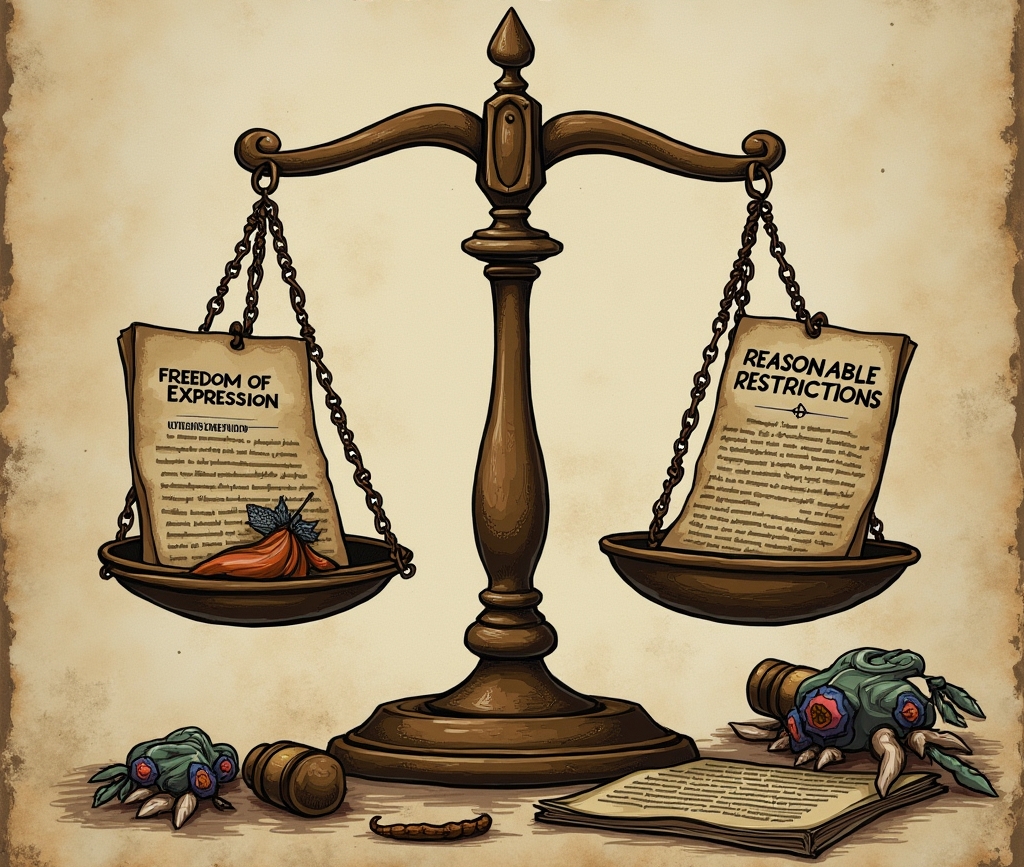
The amendments made under this Act were applicable and enforced from October 1st 1956. The major changes were:
- Union Territories (UT) were introduced;
- Three categories of states were abolished (Part A, B, C and D);
- New States were established;
- Boundaries of existing states were altered (New states like Kerala were formed by merging the territories of Travancore, Cochin with Malabar dist. Madras. Some were even merged, such as Kutch and Saurashtra were merged into Bombay);
- The role of Rajpramukhs (as discussed below) was omitted.
Note:
Part A states consisted of 9 governor’s provinces of British India such as the Ajmer-Mewara, Nagpur Province, Eastern Bengal and Assam, Gwalior, Baluchistan, etc.
Part B contained 9 princely states of British India such as Hyderabad, Travancore, Bhopal, Junagadh and more.
Part C states were the chief commissioner’s provinces of British India and some princely states such as Delhi, Andaman and Nicobar Islands, and Assam.
Part D states contained provinces governed by the Lieutenant under British India
Important provisions
As a result of these changes, Article 1 of the Constitution of India was also changed along with the First Schedule.
Apart from that, Article 80 and Fourth Schedule were changed for the changes in the seats of Rajya Sabha after the new UTs were introduced. Then, to abolish the Part C states in India and establish the new UTs officially, many other changes were made to different articles. Even Article 131 was revised to facilitate the abolishment of Part B states.
Article 153 of the Constitution of India was also amended by addition of a proviso there to remove possibility of technical bar to appointment of Governor of two or more states.
The concept of a rajpramukh referred to an administrative position or title in India from before independence. One can think of a rajpramukh as an appointed governor of an Indian province or state. Now there was no longer a need to have the title. Hence, this amendment aimed to abolish the title. The aim was to remove their title from the appointment as a President, Vice President (VP), or even for the exclusion from presidential and executive powers. To make this possible, several provisions of the Constitution were altered.
A final change was made to Article 216, to remove the proviso to it. The proviso basically stated that the President had the power to limit the number of judges being appointed at any High Court. However, since this was open to changes frequently, it was decided to omit the proviso altogether.
Constitution (Tenth Amendment) Act, 1961
Through this Amendment, a new Union Territory was introduced officially in India. The UT of Dadra and Nagar Haveli was listed as the 7th UT of India by amending Article 240(1) under this Act.
Need for the 10th Amendment
Until 1954, the UT of Dadra and Nagar Haveli was a Portugal colony. The issue arose when even after attaining independence from the Portuguese, the territory was considered at large to be under their rule by the international organisations. Resultantly, a panchayat was formed for the free territory of Dadra and Nagar Haveli.
In 1961, it was decided to merge the territory of D&NH with the Republic of India through an agreement with the then Prime Minister Jawaharlal Nehru.
Provisions of the 10th Amendment
Amendment to the First Schedule
The First Schedule to the Constitution was amended under this Act to add UT of Dadra and Nagar Haveli as the 7th UT of India.
Article 240(1)
This sub-clause was amended to include the union territory and to allow the President of India to make rules and regulations for maintaining peace, development, and harmony in the government of the newly established union territory.
Constitution (Fifteenth Amendment) Act, 1963
Introduced in 1963 in the Lok Sabha to give effect to various changes to the Constitution that had been in talks since a while, the 15th Constitutional Amendment Act, 1963 is one of the important constitutional amendments in India.
Purpose of the 15th Amendment
In November 1955, the Fifth Constitutional Amendment Act was introduced in the Lok Sabha. However, due to various reasons it lapsed, and only one change was introduced, and others remained. These changes were reintroduced through the 15th Amendment.
Apart from this, another major purpose for bringing this amendment was to increase the age of retirement of the judges of the High Court and Supreme Court.
Importance of the amendment
Apart from increasing the age limit for retirement, this amendment also allowed the High Court to issue directions and writs in their territory.

Important provisions of the 15th Constitutional Amendment
Article 217 of the Constitution which provides for the conditions and appointment of a Judge in a High Court of India, was amended under this Act to raise the age of retirement of judges from 60 to 62 years. Similarly, Article 224 of the Constitution was also amended to change the retirement age of an additional or acting judge of the High Court to 62 years. Article 224A was also inserted to the Constitution for the appointment of retired judges at the sittings of High Courts. Further, the power to decide on the matters of appointment of the judges, especially in consideration of age, was transferred to the President, and an amendment was made to Article 124 accordingly.
Besides, in the past when the High Court judges were transferred, they could not practise in any of the courts they held office in. Since this seemed to be a bit unfair, under this major 15th Constitutional Amendment Act, Article 220, if the Constitution was altered to allow retired permanent High Court judges to practise or plead before the Supreme Court and the other High Courts, except the one they were posted in last. This made the transfer of judges easy and also helped them gain more options to practise post retirement.
Until this Amendment, when transferred from one posting to another, the judges had to bear all costs. Thus, a new clause to Article 222(2) was introduced, which provides for compensation to be paid to the judges to facilitate their transfers. Further, to allow the retired judges to be at the Supreme Court, Article 128 was also amended.
With all these significant changes, the most important change was made to Article 226 of the Constitution. It was changed to allow the High Courts in India to issue:
- Writs;
- Orders; and
- Directions
against the government. This was a great step which allowed the general public to hold the state and central government responsible for their wrongdoings.
Before this Amendment, all civil servants had no opportunity to be heard, or represent their side, when facing charges of dismissal. However, this Amendment has brought that change. This led to the amendment of Article 311 which gives a provision for the dismissal, removal or reduction in the rank of the civil servants of a state. Moreover, with respect to the appointment of Chairman of the Public Services Commission Article 316 was amended to allow the appointment of acting chairman in case of the absence of the chairman.
Constitution (Nineteenth Amendment) Act, 1966
The enforcement of this Act was the result of an important recommendation of the Election Commision to abolish the election tribunals and allow election petition trials to be handled by the High Courts, due to which Article 324 of the Constitution was amended.
Need for the 19th Amendment
When it comes to the political system of India, the 19th Amendment is really important. It shaped the way India’s politics works today. Due to many problems, there was a need to remove the election tribunal and transfer their powers to the High Court.
Major changes in the Constitution
After its approval on 11th December, 1966, the 19th Amendment came into force, and brought the following change to the Constitution of India:
Amendment of Article 324
Article 324(1) was amended to remove the words related to the setting up and appointment of the election tribunals to decide on the matters of elections.
Constitution (Twenty-First Amendment) Act, 1967
In India, we have an official list of languages as a part of the 8th Schedule to the Constitution. Before the Twenty-first Amendment, Sindhi was not a part of this official list. This amendment was passed to change this after consistent demands from the Sindhi community and Sindhi speaking people across the nation.
Origin of the 21st Amendment
The Bill for enforcing the twenty-first amendment was enacted in the Rajya Sabha on 20th March, 1967 and was introduced in April 1967. The reason for this amendment was the demand of the Sindhi-speaking people to incorporate it in the Eighth Schedule of the Constitution.
Importance of the 21st Amendment
The Linguistic Minorities Commission, along with the Sindhi-speaking Indians were of the belief that Sindhi was also a part of the official languages recognised under the 8th schedule. As a result, the 8th Schedule was amended to include Sindhi amongst other official Indian regional languages.
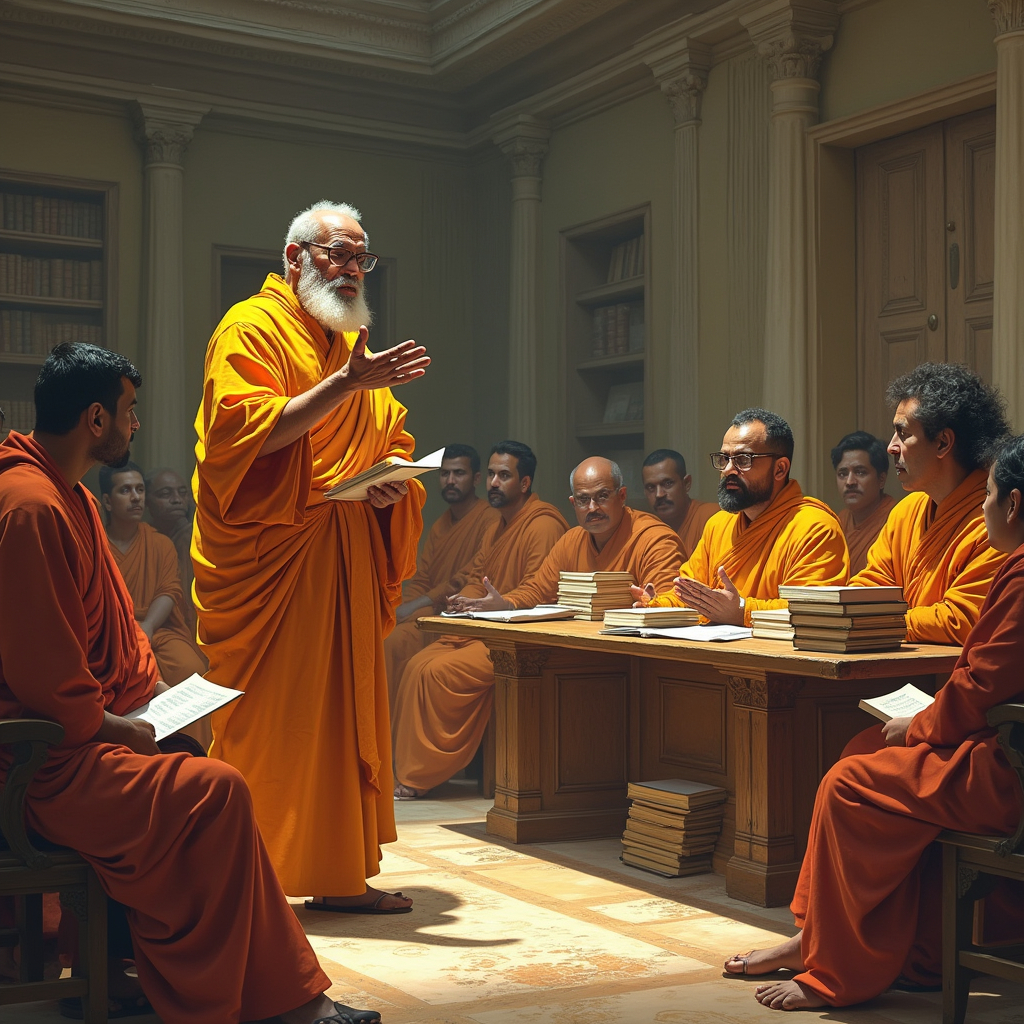
Constitution (Twenty-fourth Amendment) Act, 1971
The 24th Amendment Act was a consequence of the judgement passed by the hon’ble Supreme Court in the case of IC Golaknath. This was the first judgement that did not approve the Parliament to have powers that could amend the Constitution in any manner they wanted. Which means that this decision reversed the earlier ones, passed by the same court on very similar aspects.
Thus, Article 368 was amended because due to the increasing number of cases arising before the courts all across India, to challenge validity of the land reform laws, and other laws, it was important to expressly mention that the power of Parliament to amend the Constitution was exhaustive. This step resulted in a sort of unlimited power to the Parliament.
However, there was another provision which still protected the fundamental rights, Article 13. To make the power even more exhaustive, Article 13 was also amended to protect the laws passed under Article 368 from being unconstitutional under Article 13.
A final important change was also introduced to make the President’s assent mandatory for all constitutional bills. As a result, sub-clause (c) to clause (2) of Article 368 was amended.
Objective of the 24th Amendment
The objective behind this important amendment of the Constitution of India was to overcome the difficulties that the government faced in giving an practical effect to the Directive Principles of State Policies (hereinafter referred to as “DPSPs”), especially when it came to the matter of land acquisition.
The Supreme Court had, in the Bank Nationalisation Case (1970), struck down the law violating the fundamental right to property and Article 31(2) of the Constitution, when it came to the compensation involving properties acquired by the government. In this amendment, Article 31 was altered to change the term from compensation to amount.
That’s not all, a new article, Article 31C was also inserted after Article 31B to save certain laws from judicial review, as long as the law was passed to give effect to the Directive Principles of State Policy.
Even though only two provisions of the Constitution were altered, the changes it brought were still so very significant because as a result of this amendment the right to property , which was the fundamental right, was now curtailed to an extent.
Constitution (Twenty-sixth Amendment) Act, 1971
In ancient India, the privy purse was a system where the villagers and commoners were required to pay certain amounts to the rulers. When the Constitution was introduced and India was declared as a democracy, there was no need to keep these practices legal anymore. Thus, the 26th Constitutional Amendment was enacted to terminate this concept and abolish the rulers of the former states.
Constitution (Thirty-fourth Amendment) Act, 1974
The Chief Ministers’ Conference of July 1972 resulted in multiple suggestions to reduce the ceiling on holding of lands. These are the changes that came into force under this Act.
- Reduction in ceiling level;
- Application of ceiling level on family basis; and
- To withdraw all the exemptions.
As a result, a change was brought to the Ninth Schedule of the Constitution and two new laws were added to the list, namely:
- The Bihar Land Reforms (Amendment) Act, 1972; and
- Gudalur Janmam Estates (Abolition and Conversion into Ryotwari) Act, 1969
Constitution (Thirty-sixth Amendment) Act, 1975
Before this amendment was passed, the state of Sikkim was just a small Buddhist kingdom, ruled under a monarch. The 36th Amendment Act was passed to acknowledge Sikkim as an associate state of India. Hence, the First Schedule was amended to add Sikkim, and even one seat was allocated to the state of Sikkim in the Council of States.
Need for the 36th Amendment
When the Chief Minister of Sikkim made a request to the Indian Parliament, to recognise Sikkim as an official state of India, voting was done, and after obtaining over 97% votes, the need to amend the Constitution arose.
Major change to the Constitution
To recognise Sikkim as a state, the First Schedule was amended and the name of Sikkim was included with the various states of India.
Constitution (Thirty-eighth Amendment) Act, 1975
The circumstances under which the 38th Amendment was enforced makes it really significant to the history of constitutional amendments . This Act was enforced when a nationwide emergency was declared in India due to internal conflicts.
Purpose and scope of the 38th Amendment of the Indian Constitution
The main purpose of introducing the 38th amendment of the Indian Constitution was to increase the powers of the State, and President during a national emergency. Moreover, it also removed the power of the judiciary to review the decisions made with respect to the national emergency in India.
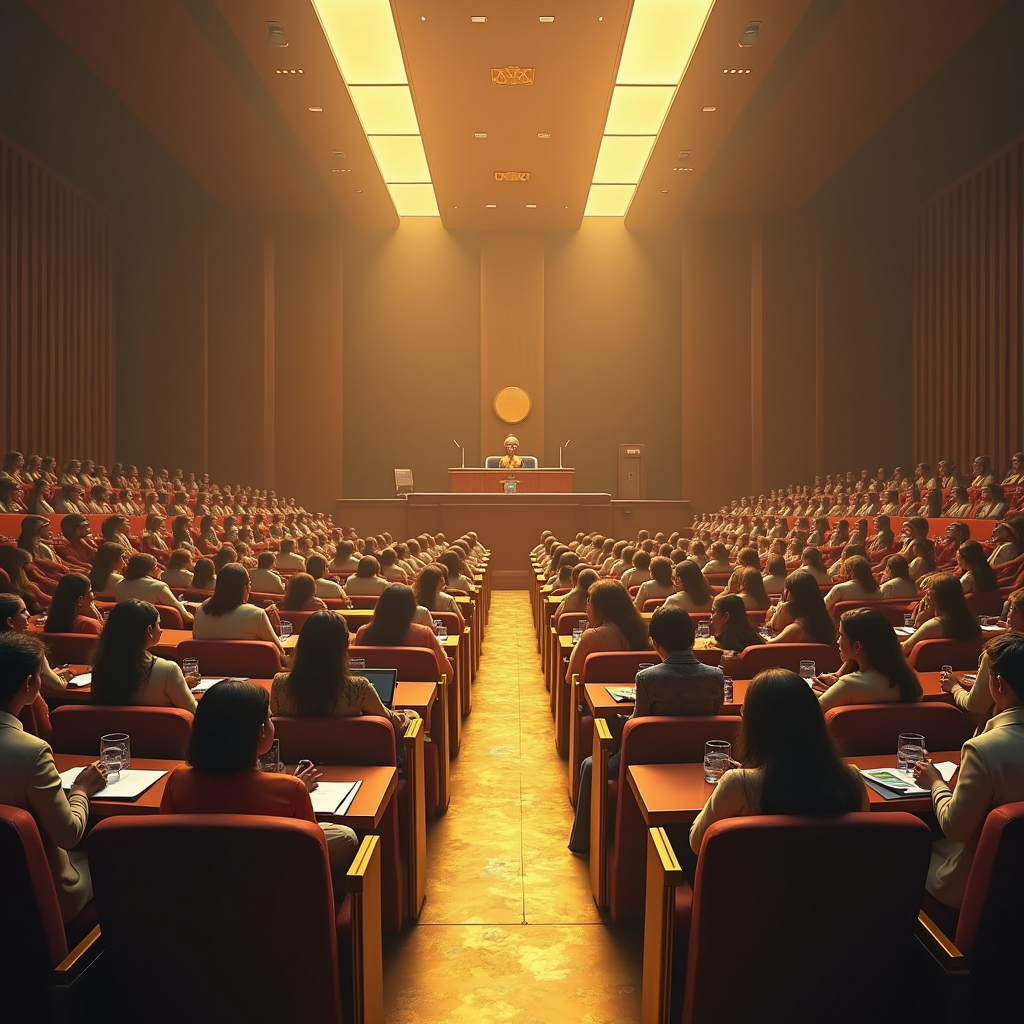
The idea was to make the powers of the President absolute and non-debatable during any state of emergency in India. The more interesting aspect of this provision is that it was enacted during 1975-77, when the emergency was in place. Many states of India, including the state of Gujarat, Punjab, Rajasthan, Manipur, etc., did not ratify this amendment.
It is considered to be an important amendment as it led to an imbalance in the powers of the judiciary and the executive, by taking away or limiting the power of the judiciary to review the decisions or actions of the President.
Important changes to the Constitution
This particular amendment was made to increase the scope of powers for the President, Governor and Administrators during a national emergency. Articles 123, 213, and 239B were altered to give effect to the fact that the satisfaction of the three positions shall be conclusive.
Moreover, Articles 352, 356 and 360, which provide powers to the President with respect to emergency in the nation in the case of:
- War threat, external aggression or internal disturbances;
- Financial emergency; and
- Failure of state government;
which stood challenged and in dispute, were also amended to make the emergency non – justiciable.
The fact that there was a challenge against future proclamations of emergency, an alteration was made to Article 356, to allow the President to enforce proclamation of emergency on several grounds, irrespective of the enforcement of prior proclamations.
Article 359 was also amended to make the reading of the deterrence of the fundamental rights the same as provided in Article 358.
As a result of this amendment, the Presidential orders were removed from the scope of judicial review, and protected the actions of the executive during the emergency.
Constitution (Forty-second Amendment) Act, 1976
With the aim to give more effect to socialism, secularism and integrity of the nation, this Act was enforced in 1976. The objective was to eradicate the difficulties arising in achieving these goals. Consequently, the words, “Socialist, Secular and Integrity” were included in the Preamble, which makes this Amendment one of the most important amendments in the history of the Indian Constitution.
Prominent importance was given to the power of Parliament, and in the furtherance of protection of Indian democracy, Article 31C was expanded to include all principles laid down in Part IV of the Constitution.
Need for the 42nd Amendment
The main need to amend this Constitution was felt after the constant issues faced and due to the increasing number of cases, challenging the validity of the government’s decision. As a result, to make things clear, the 42nd Amendment, the lengthiest amendment of the Indian Constitution was introduced.
Scope and Purpose of the 42nd Amendment
By amending more than 50 provisions of the Constitution, the objective was to increase the powers of the Parliament and the central government and to reduce the impact of the judiciary. As a result, the following type of changes were made:
- The terms socialist, secularist and integrity were to be added to the Preamble of the Constitution;
- The fundamental duties were introduced for citizens to increase their responsibility over the welfare of the nation;
- It also curtailed the powers of judicial review of the courts;
- By increasing the powers of the government, the federalistic nature of India was also taken into the scope of 42nd Amendment; and
- Alteration in the balance of power between states and Centre.
Major provisions of the amendment
Due to the major amendments and its comprehensive and detailed nature, the 42nd Amendment of the Constitution is also named as the mini-constitution. It brought changes in more than 50 Articles of the Constitution to increase the central power of the Government, reduce state autonomy, and to protect the laws passed by the government.
Article 31D
Article 31D was introduced in this amendment, where protection was provided to certain laws from being held as unconstitutional, if it fell for any of the following purposes:
- Prevention of anti-national activities; and
- Prevention of formation of the anti-national association.
Article 32A
Article 32A was also inserted to the Constitution to limit the scope of the Supreme Court to entertain factors related to constitutional validity of the laws passed by the state government while dealing with Article 32 writ petitions.
Article 39
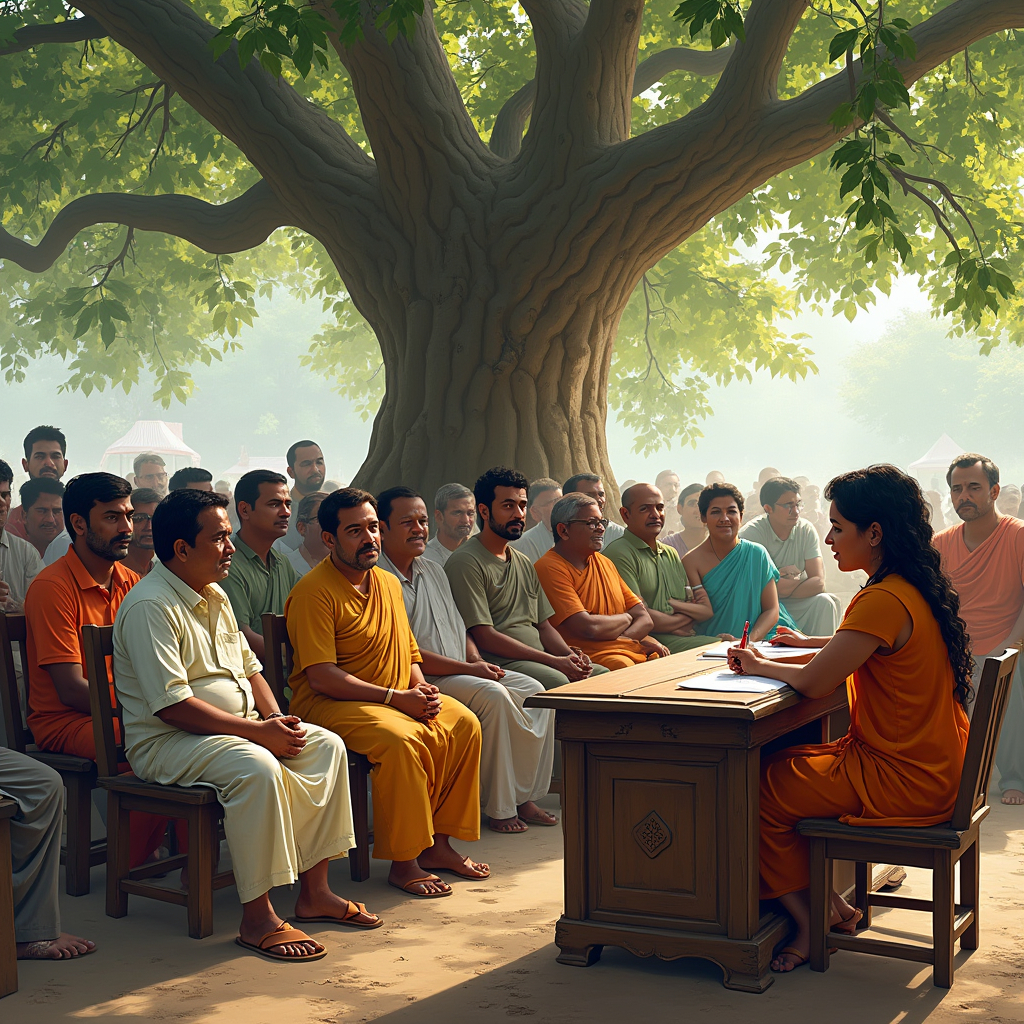
Then, Article 39 was also altered. This Article is specifically curated to put some duties upon the state, to try and achieve the highest possible socio-economic order. Hence, a DPSP was introduced, for the State to make efforts to protect the children from being exploited or abandoned – whether materially or physically.
Insertion of Article 39
To make this provision stronger, new Article 39A was inserted. It provides for the access to justice for the weaker sections of the society by providing free legal aid. This amendment was the reason why today access to justice is comparatively easier for the poor people, with the help of free legal aid.
Insertion of Article 43A
Another Article 43A was also added. This article is to allow the workers of a factory establishment to feel more involved in management. It provided that the States were supposed to take such steps as may be required to make that change. Another attempt was also made to protect the environment, by introducing Article 48A, which provided that the states must act in order to protect and improve the environment.
Introduction of Part IVA to the Constitution
More importantly, it is in this Amendment that the fundamental duties of the citizens of India were introduced as Part IVA of the Indian Constitution. Then, changes were made to Article 74 to constitute a Council of Ministers to aid and advise the Prime Minister, if these pieces of advice were approved by the President. Hence, this further increased the scope of presidential powers in various decisions.
Article 83
Even the duration of the Houses of Parliament was increased from five to six years by substitution of the words in Article 83.
Changes to Article 102
Article 102 was amended to introduce that any person must be disqualified from the office of Parliament if they were found to be holding office of profit under the Government of India.
Article 131A
Article 131A was also introduced to provide exclusive jurisdiction to the Supreme Court to decide the constitutional validity of laws passed by the centre.
Insertion of Article 139A
Further, widening the scope of the Supreme Court, Article 139A was also introduced, which allowed the Supreme Court to take cognisance of certain cases, on their own motion and dispose of them, if the matter is pending before one or more High Courts.
Article 144A
Special provisions were also introduced while determining the constitutional validity of laws, through Article 144A. According to this, the minimum bench required to decide on such matters was 7 in number, and a central law could not be invalid without the two-third majority of the judges sitting in the bench. As a result, even the rules of court, etc. were amended to facilitate the proceedings under Article 131A and 139A. Article 226 of the Constitution was also altered significantly to curtail the power of judicial review and to limit the jurisdictions.
Article 226A
Moreover, Article 226A was introduced to leave out the central laws from the scope of test for constitutional validity.
Criticism of the 42nd Amendment
This amendment gave a clear path to the introduction of the basic structure doctrine, by literally hampering the basic structure of the Constitution of India. Prior to this amendment, there was a balance of power between the centre and the states, which also gave way to the federalistic principles that India follows. However, the changes made through this Amendment Act, created a huge imbalance, as a result of which, it faced a lot of criticism by:
- Opposition parties;
- Petitions before the courts; and
- Protests of the public at large.
Constitution (Forty-third Amendment) Act, 1977
The limitations added to the scope of judicial review powers of the Supreme Court and the High Court had not gone unnoticed. Article 32A, 131A, 144A, 226A and 228A curbed the powers of the courts. Moreover, certain articles were also bringing hardships to access to justice to people living in certain parts of India.
Need for the 43rd Amendment
Due to the previous constitutional amendments, recently, there had been a lot of multiplicity of cases in the courts. This was putting an unnecessary burden on the administration of justice. There was a need to remove, omit and change certain provisions from the prior amendments, and to bring some social order. Thus, the 43rd Amendment Act came into the picture.
Provisions under the 43rd Amendment
Apart from this step, the amendment also allowed courts to decide cases in a manner as if they were filed before the articles were ever introduced. This helped in disposing of cases faster and more efficiently.
As a last and final step, Article 31D which provided powers to the Parliament to create laws against the anti-national activities, was also abolished, especially now that it was so evident that the powers could be easily abused.
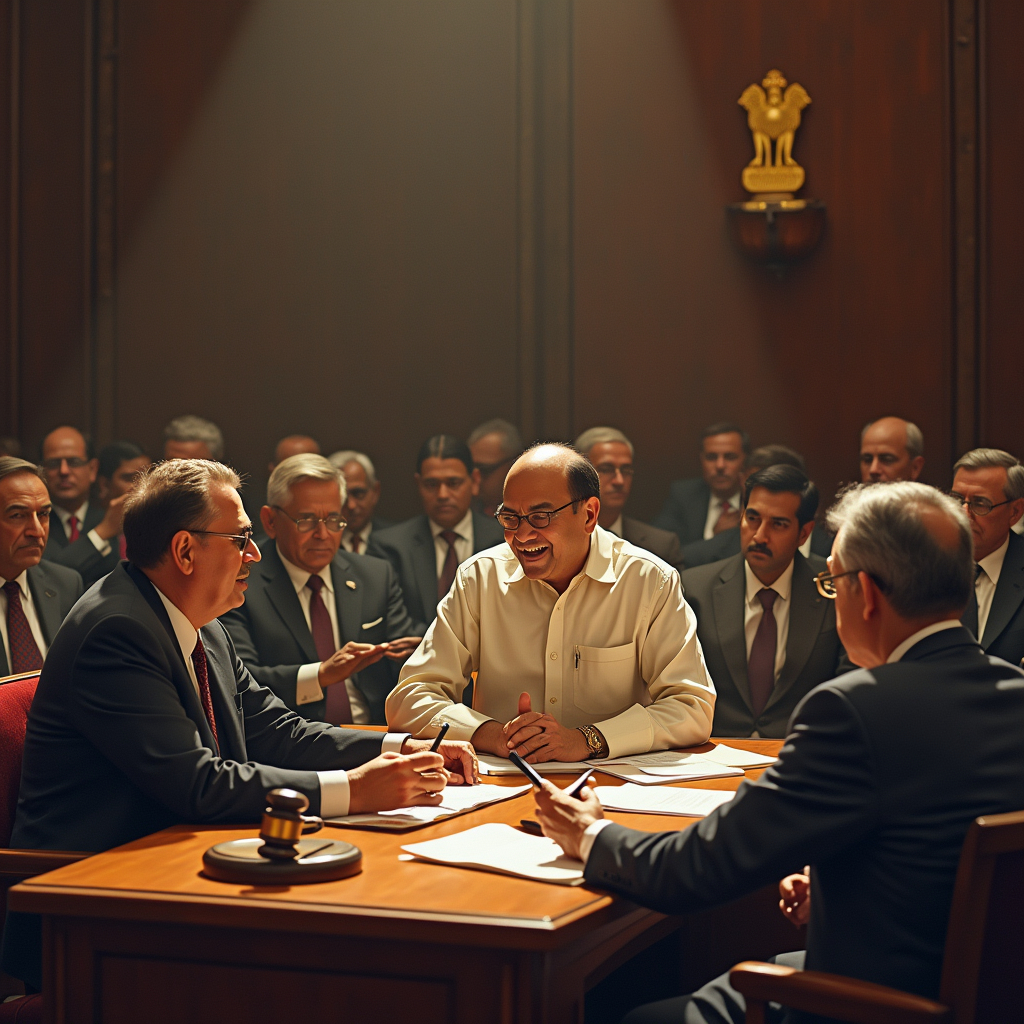
Significance of the 43rd Amendment to the Constitution
The most significant impact of the 43rd Amendment is that it invalidated 6 of the provisions introduced in the 42nd Amendment Act, which was a promise made by the party in power to improve the Constitution to change it as it was before the Emergency. Let us take a look at the repealed provisions.
Article 31D
Eradication of Article 31D proves that the purpose of this amendment was to increase the liberties. Moreover, it also restored the judicial review powers of the judiciary and created a proper balance between the powers.
Article 32A
Article 32A provision was introduced to remove the state laws from the ambit of judicial review under Article 32. Hence, after the clarity was given on the power of courts to review the laws, the article was repealed to create the balance of power.
Article 131A
This article provided the Supreme Court the exclusive jurisdiction to decide on the constitutional validity of central law. As a result of which, the power of the High Court to decide on the validity of the laws passed by the centre was taken away. Hence, this arbitrary provision was removed to restore the power of high courts.
Article 144A
The Article provided for a minimum number of judges to be present as 7 to decide on the constitutional validity of the central laws. However, many cases were being held up as a result of this. Thus, it was proposed to omit Article 144A.
Article 226A and 228A
Article 226A put a restriction on the High Courts to decide on the constitutional validity of the central laws. As a result of which, it was omitted. Moreover, Article 228A which provided special provisions for the disposal of validity of the state laws, also put a restriction on the power of judicial review of the Supreme Court. All these changes were gradually reversed through the
Constitution (Forty-fourth Amendment) Act, 1977
After the 42nd Amendment, the 44th Constitutional Amendment is also one that paved the way for significant changes to the legislative framework of India. It was evident from the events in the country at the time, along with the previous amendments of the Constitution, that even the fundamental rights granted to the citizens were susceptible to be taken over by a majority.
To set an example of the previous errors, and to ensure that no such issue arose in the future against, it was proposed to change certain articles and provisions of the Constitution.
Need for the 44th Amendment
All changes proposed in this Act were pertaining to change the provisions that :
- had effect of impairing the secular or democratic nature of the country;
- took away the fundamental rights;
- had impact on the free and fair elections; and
- compromise of the judicial powers.
This resulted in the amendment of Article 368.
Major provisions of the amendment
Then, Article 31 was also removed to eradicate the long issues related to the fundamental right to property, and necessary amendments were made to Article 19. When the focus of the government shifted towards achieving the DPSPPs, the fundamental right to property was coming across as a hurdle in achieving the socialist goals. Resultantly, the right to property was removed from the fundamental rights and was labelled as a legal right in the Constitution instead.
Moreover, to safeguard the protection of the fundamental rights, especially the basic right to life and liberty, it was proposed to remove internal conflicts from being a valid ground for proclamation of emergency, unless it amounted to armed rebellion. This step was much needed to put a stop on the extraordinary powers of the Parliament to alter the Constitution of India.
Then, this Amendment also changed the provisions to make sure that the right to life and personal liberty. Thus, the changes were made to curtail certain powers which allowed the government or president to suspend the fundamental rights.
There was also a need to reduce the number of backlogged cases in the courts of India. To make this possible, Articles 132, 133 and 134 were amended, and new Article 134A was inserted. The new article allows the High Court of a state to consider granting a certificate for Supreme Court appeal, at any point after passing a judgement, even if it was immediate.
This amendment is also important because here, it was considered to give free speech and to be able to report freely for the media houses in India. This would help in spreading awareness of the ongoing situations to the general public. Hence, it was also stated that there was no need for censorship on media houses by the government.
Constitution (Fifty-first Amendment) Act, 1984
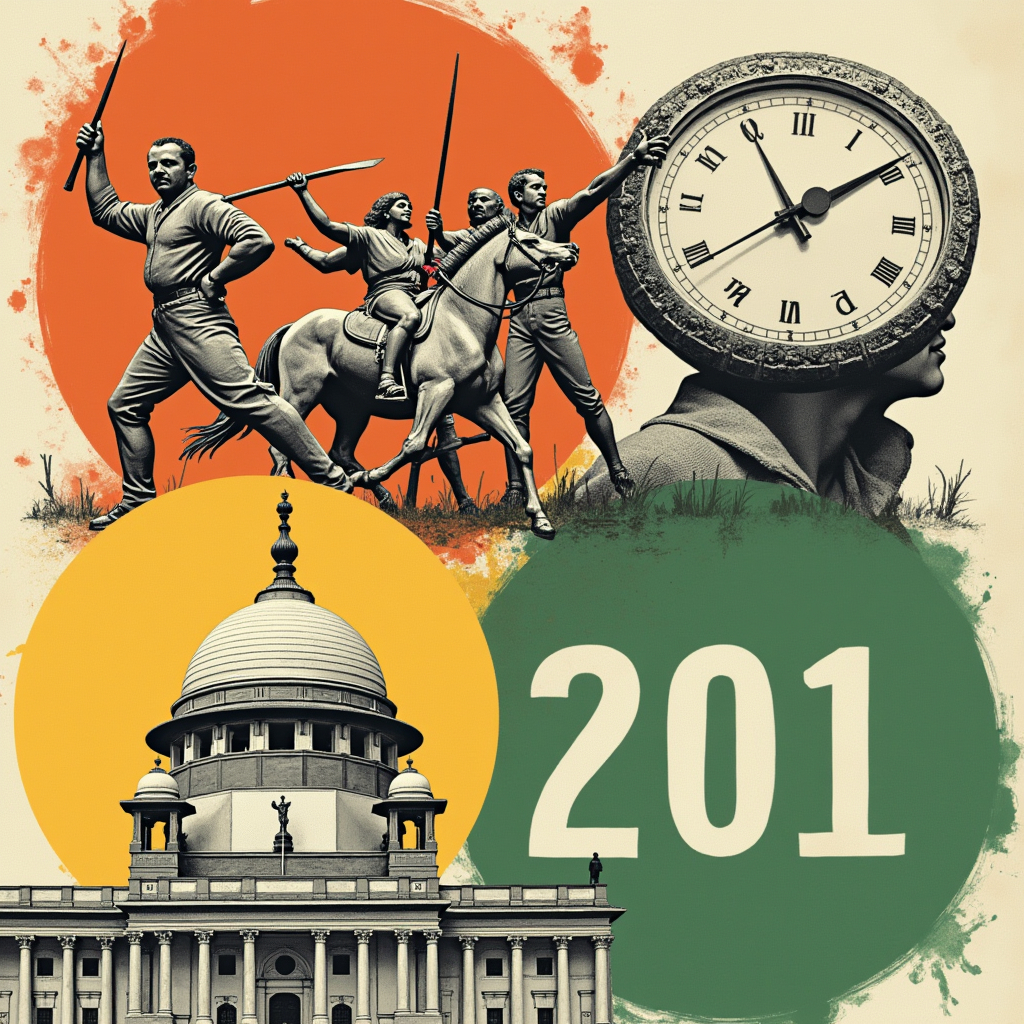
On the day of 31st March 1980, the state of Meghalaya had approached the government of India through a resolution, to ask for reservation of seats for the STs in both the houses of Parliament (Lok Sabha and Rajya Sabha).
This resolution meant, there was now a need to amend Articles 330 and 332 to facilitate this reservation. Hence, the Constitution (Fifty-first Amendment) Act, 1984 was passed.
Need for the amendment
Apart from Meghalaya, Nagaland, Arunachal Pradesh, and Mizoram governments were also rooting for these amendments to take effect in those areas as well. Thus, this amendment Act was enforced to allow this reservation of the STs in Meghalaya, Nagaland, Mizoram, and AP.
Major Provisions of 51st Amendment
Article 330
This article was changed to allow the reservation of seats for the STs of Nagaland, Mizoram, AP and Meghalaya in the Lok Sabha.
Article 332
This provision was amended to allow the reservation of STs in the legislative assemblies of Nagaland and Meghalaya.
Constitution (Fifty-second Amendment) Act, 1985
By the time the first 50 amendments were passed, people started recognising the importance of the power balance and the separation of powers. The country had faced many disruptions due to certain political defects. A political defection usually refers to the situation when a person of a particular political party revolts or changes their association with that party, and joins another.
There was no way this issue could be ignored anymore. Thus, the Anti-defection Bill was passed. The objective of this Bill was to remove and invalidate all forms and types of political defections. The idea was to ensure that democracy is protected.
Provisions of the Anti-Defection Bill
Consequently, changes were made to the provisions of Articles 101, 102 and 190. Also, the tenth schedule to the Constitution was introduced, which provides the provisions for the disqualification on the grounds of political defection. Let us take a look at the changes made to the provisions in depth.
Article 101
The provision was amended to lay down the grounds which will amount to defection of the members of either of the following:
- House of Parliament; or
- Assembly of State; or
- Council of Members.
This Bill and the amendments brought a major change in the nation’s political landscape. A series of debates led to this enactment, and one of the major changes to the Constitution of India.
Article 102
Clause (2) was inserted to the list of disqualification from membership as a Member of Parliament, if he or she was also disqualified as per the provision of the Tenth Schedule.
Article 190
Clause (2) of Article 191 was inserted within the scope of disqualification from the House of Parliament.
Article 191
This Article was amended to add that whoever was disqualified under Schedule 10, shall also be disqualified under this provision for the position of membership in any state Legislative Council or Legislative Assembly.
Landmark Precedent
Kihoto Hollohan vs. Zachillhu And Ors (1992)
This is one of the landmark judgements passed by the Supreme Court with reference to the anti-defection Bill in India. Let’s see the facts, issues and judgement.
Facts of the case
In this case, the Supreme Court had clubbed a lot of petitions received on the constitutional validity of the anti-defection law by many political parties. The main contention was that the 10th Schedule was particularly violating democracy and the core essence of the Constitution of India.
Issues raised
The following issues were discussed in this judgement:
- Whether the 10th Schedule to the Constitution violated the basic structure and the democratic nature of our Country? and
- Whether para 7 of the Tenth Schedule was leading to a limitation to the scope of judicial review and was it required to be struck down?
Judgement
With a striking majority of 3:2, the bench in this landmark judgement decided that the anti-defection law was valid and hence, it confirmed the validity of the 52nd Constitutional Amendment. The judgement serves as a stark reminder that all the provisions of the law must be read as a whole and not in parts to achieve its true essence.
Constitution (Sixty-first Amendment) Act, 1988
In the olden times, the minimum age for voting in India was 21 years. Yet, in many nations, the age of voting was seen to be 18 years. Moreover, in India also, many state governments were following the same pattern of 18 years of age.
It was also held that the present day youth is smart and literate enough to gain that maturity and vote accordingly.
Major changes to constitutional provision

Article 326 was amended in this Act to change the minimum age for voting to be 18 years. Before the Amendment Act was passed, the age of suffrage as per Article 326 was “not less than 21 years”. However, it was changed to the age of 18 years.
Significance of the amendment
This shows that with time and development, the youth of the nation had become more mature as a result of which it was deemed okay for them to make such a decision of voting at the age of 18.
Today, if we are able to go out and vote as soon as we reach majority, it is only because of the 61st amendment of the Constitution of India.
Constitution (Sixty-fifth Amendment) Act, 1990
This amendment is considered as an important amendment as it provided for a high level five member Commission to be set up under Article 338 to investigate all matters related to rights granted to the SCSTs. This is the birth of the National Commission for Scheduled Castes and Scheduled Tribes, which comprised five members, plus Chairperson, Vice-Chairperson and other members. The commission had powers to inquire, advise, present to the President, and to make and keep reports and records of the issues faced by the SC and STs in getting access to the safeguards. Prior to this, a single officer was allotted under this article, whose role was removed when this important constitutional amendment came into force.
Constitution (Sixty-ninth Amendment) Act, 1991
The objective of this Act was to reorganise the administrative setup of the UT of Delhi. From the report of a Committee appointed to look into this matter, it was decided that Delhi was okay as a Union Territory, and was provided the Legislative Assembly and a Council of Ministers. Moreover, one of the recommendations of the report was to provide a special status to National Capital Delhi amongst other union territories. For this reason, the Parliament introduced Article 239AA and 239AB.
Need for the amendment
Before the 90s, Delhi was a separate Municipal Corporation governed through the Delhi Administration Act. However, once it was recognised as the national territory, there was a need to re-organise the way the capital of our nation was administered, as a result of which, the 69th Constitutional Amendment was introduced.
Changes to the provisions
Article 239AA
This provision was introduced to announce the date of amendment as well as the date of the establishment of Delhi as a National Capital Territory.
Article 239AB
This article provided various provisions to maintain the administration, in case of the failure of the administration. This allowed the President the power to order suspension of operations.
Constitution (Seventy-third Amendment) Act, 1992
In India, the Panchayati Raj has been functional ever since 1959. However, until the 73rd Amendment, it was not constitutionalized. The objective of passing this act was to give the proper recognition to this system, so that they could function with respect and dignity.
Due to the lack of recognition, there were no proper election systems, and heavy suppression in the Panchayati Raj, this amendment introduced Part IX of the Constitution which provides all the provisions to manage the panchayats in India.
Need for the 73rd Amendment
The major need was to recognise the panchayat raj systems prevalent in India. The Act was divided in two different parts, to recognise the roles and responsibilities of the Panchayat system in India.
Major change to the provisions
Article 40 of the Constitution was changed to make it sure that the States were taking efforts to set up village panchayats, and give them powers to function as a unit of self government.
Constitution (Seventy-fourth Amendment) Act, 1992
When the local bodies of many states became weak and ineffective for various reasons. Hence, the Seventy-fourth Amendment talked about bringing the relation between government and urban local bodies and to manage the functions and tax powers, arrange the revenue sharing, etc.
This led to the creation and composition of three types of municipalities:
- Nagar Panchayats;
- Municipal Councils; and
- Municipal Corporations.
Need for the 74th Constitutional Amendment
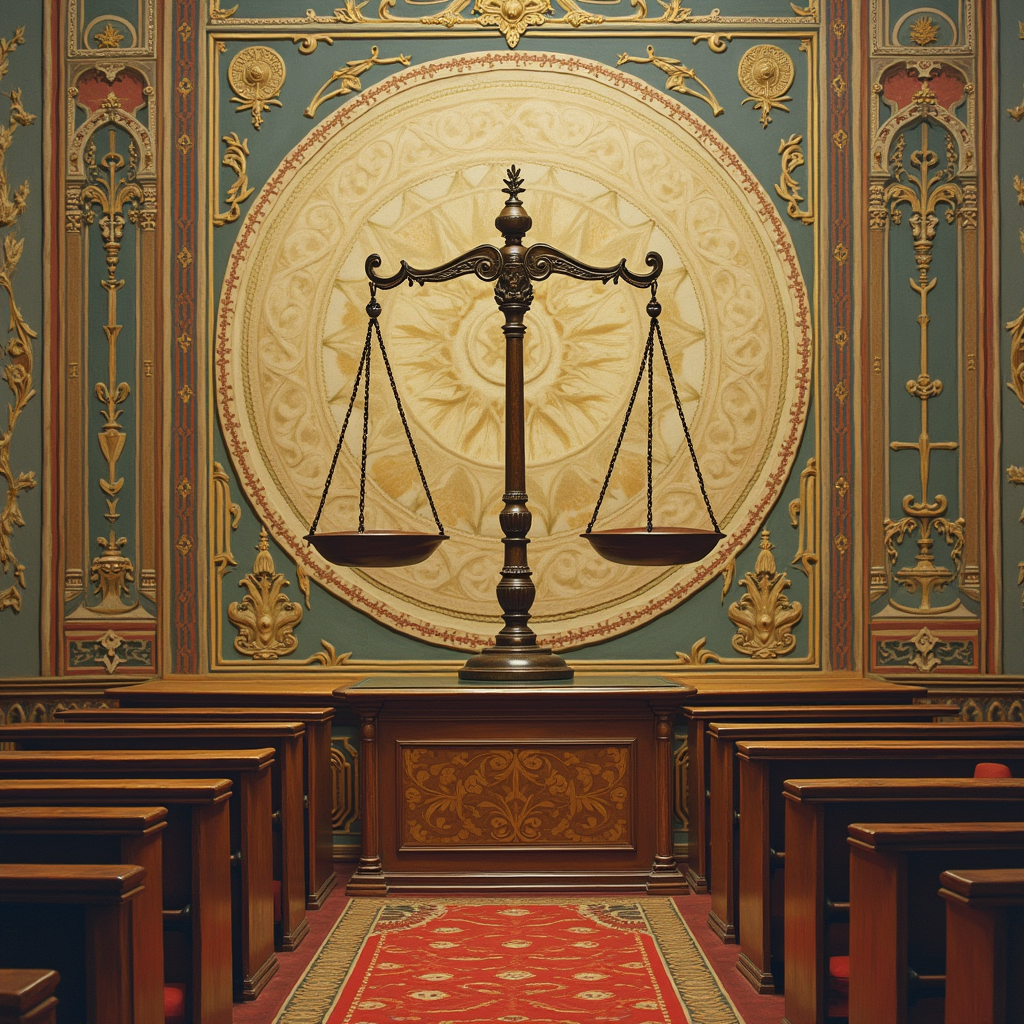
Before this amendment was passed, there was a centralisation of power. With the passage of time, a need was felt to decentralise these powers to avoid the concentration of power and rule. As a result of which, in 1992, the 74th Amendment Act was passed to allow the local authorities like municipalities the power to regulate a limited area.
Major provisions of the 74th Amendment
To provide regulatory powers to the municipalities in India, Part IX-A of the Constitution was introduced, which consists of the following provisions:
- For composition of municipalities;
- Wards Committee;
- Reservation of seats in municipalities;
- Powers;
- Responsibilities; and
- Audit requirements.
Moreover, the 12th Schedule to the Constitution of India was also inserted due to this Amendment. It includes the various functions of the municipalities, like:
- Urban and town planning;
- Roads and bridges;
- Fire services;
- Urban forestry;
- Waste management;
- Safeguarding of interests of weaker sections;
- Poverty alleviation; and more.
Due to this amendment, all the state governments were now required to adopt the new system of municipalities. The objective behind this step was to decentralise the accumulation of powers and create a stronger urban government for localities.
Constitution (Eighty-sixth Amendment) Act, 2002
By the late 90s and early 2000s, the importance of primary education for the welfare of children was rising. To create equality, and provide equal opportunities, in 2002, the Constitution was amended to bring about a really important change for the nation. This important Constitutional Amendment Act inserted Article 21A to the Constitution, under which it was mandatory for the State to provide free and compulsory education to all children between the ages of 6 to 14.
Moreover, the parliament even changed the provisions of Article 45 to allow the State powers to make provisions for the early childhood health care and education for all the children in India until they complete 6 years.
Also, to add legal responsibility to the parents, Article 51A(k) was introduced to the Constitution. It is a fundamental duty on the parents and guardians to provide education to their children and ward, respectively, especially between the ages 6 to 14.
Objective of the 86th Constitutional Amendment
By making education free and compulsory, this Amendment Act is highly focused on improving overall life quality of the upcoming generations, by ensuring that they receive the primary education, which can help them live a healthy and happy life with proper exposure to the world.
Illiteracy was one of the major issues acting as a restraint to the development of India. Also, to achieve the goals provided under the DPSPs, the government was to work on social welfare. This step, of making education free and compulsory for all children below the age of 14 years marked a significant step in the development of our country, along with the social welfare at large.
Importance of the 86th Amendment
This can be said to be one of the most important constitutional amendments, as it is a huge step towards changing the ways our education system was functioning for several years. This change gave birth to a million new opportunities for those who never focused on education and it also increased awareness for the need for education, especially among children between 6 and 14 years of age. for
Constitution (Eighty-eighth Amendment) Act, 2003
This Act proposed the insertion of Article 268A of the Constitution to introduce the concept of a service tax. This was to be levied by the Union Government and to be collected and appropriated by both, the Union Government. Consequently, Article 270 and the Seventh Schedule to the Constitution were also amended.
Objective of the amendment
Prior to this amendment, there was no mention of any levy of service taxes in either the state or union lists of the Constitution. However, a need was felt to introduce the concept, and levy of service tax by the Central Government, which would then be appropriated by the Centre to the states.
Significance of the service tax amendment
It introduced a new article 268A to the Constitution of India and allowed the government to charge taxes on the services. However, another significant aspect is that a few years after the inception of service tax, the entire concept was replaced by the Goods and Services Tax (GST), along with the abolishment of various indirect tax regimes, such as the excise duty.

Constitution (Ninety-first Amendment) Act, 2003
Objective of the Act
The main objective of this Act was to strengthen the anti defection laws and to put a limit on the number of ministers in the Council of Ministers, at both the central and state level. It was seen that the exceptions granted in the 3rd para of the 10th Schedule were being misused and abused. This resulted in the division of political parties.
Hence, the 91st Amendment Act was passed with an objective to:
- Put a limit on the number of Council of Members;
- Remove defectors from public office position; and
- Strengthen the anti – defection law.
Important provisions
Article 361B was introduced, which provides that any disqualified member under the Tenth Schedule would also be considered as disqualified under this section for the appointment of a remunerative political post. Tenth Schedule was further changed to omit paragraph 3.
Article 75 was also amended to include a new clause, which put a limit on the total ministers of the Council. It was stated that the number of ministers, including the PM, must not exceed 15% of the total members of the Lok Sabha.
Moreover, Article 164 was also amended to facilitate this limit and the disqualification. Lastly, para 3 of the Tenth Schedule, which protected from disqualification in case of political defection, was also removed to make the anti-defection law stronger.
Constitution (Ninety-third Amendment) Act, 2005
By the early 2000s it was high time to bring changes that would safeguard the socially and educationally backward classes (SEBC) in India, along with the SCs and STs. This Amendment Act was introduced to create provisions like reservation and protection of the SEBC.
This amendment also included a reservation for the SEBCs for admission in private and public educational institutions across India, except for institutions set up by the minorities.
Purpose of the 93rd Amendment
With the aim of providing an equal opportunity to the SEBCs in India, the amendment was enacted. It provided for the following type of changes:
- To provide reservation in educational institutions administered by the centre;
- To increase the quota of reservation for SCs and STs to 27%;
- A special reservation quota of 27% was also provided for the OBCs; and
- To grant the government certain powers to issue orders and pass laws for implementation of the reservation.
Significance of the Amendment
Though the changes were made with positive viewpoints to help the SCs, STs and OBC to develop, and to give them an equal opportunity, there was also criticism from many areas. Many critics pointed out that this could lead to the institutions lowering their standards.
Moreover, many also felt that this reservation would further stigmatise the SC and ST classes from the other non reserved classes.
Another point of importance for the 93rd Amendment Act was also that the reservation in educational institutions was not limited to the government administered but also to the private institutions.
Constitution (Ninety-seventh Amendment) Act, 2011
The co-operative societies in India have been functioning since the pre-independence era. Now that India was free and the socio-economic order was a priority, in 2011, Article 43B was introduced to the COI through the 97th Constitutional Amendment Act. This Article imposes a duty on the State to take measures to promote the co-operative societies in India.
Key features of the 97th Constitutional amendment
The main aim was to give an official recognition to the co-operative societies in India. The following are the key features of this amendment Act:
- Article 19 made it a basic right to organise and form the co-operative societies in India;
- A new DPSP was introduced for the government to promote co-operative societies; and
- Part IX-B of the Constitution was introduced to allow and administer provisions for the co-operative societies in India.
Constitution (Ninety-ninth Amendment) Act, 2014
Since a long time, in India the collegium system has been followed for the appointment and transfer of judges of the High Courts and Supreme Court.
However, the 99th Constitutional Amendment was all set to let go of this system and instead to compose a National Judicial Appointments Commission (NJAC), by way of insertion of Article 124A. Many of the provisions of the Constitution of India were proposed to be changed in this Act to give the power to transfer and appoint judges to the Appointment Commission.
Need for the amendment
The Supreme Court in the case of Supreme Court Advocates-On-Record vs. Union of India (1998) had created a memorandum of procedure to appoint the judges. This memorandum was being implemented through the 99th Constitutional Amendment.
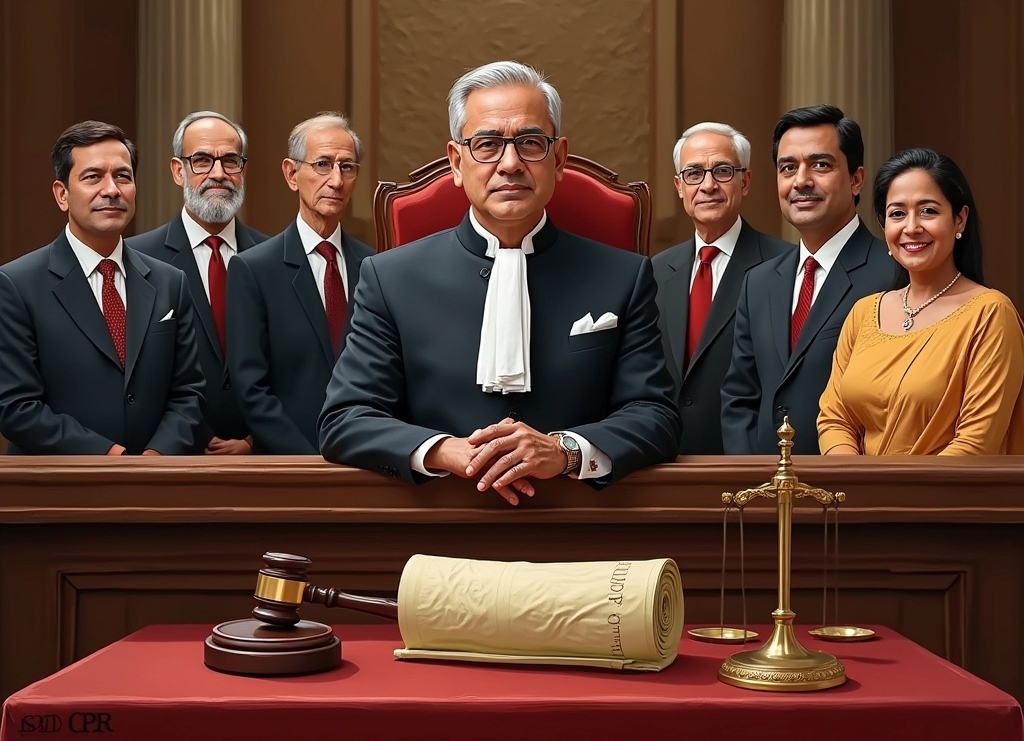
Key features of the 99th Constitutional Amendment
- Formation of a new commission the NJAC was proposed to select and transfer the judges across the nation;
- The composition of the NJAC was to have 6 members, including the Union Law Minister, Chief Justice of India (CJI), and two additional senior SC Judges.
Major amendments
Article 124A was introduced to provide for the composition of the NJAC. The NJAC was supposed to consist of:
- Two senior most SC judges;
- CJI as chairperson; and
- Two individuals chosen by a special committee.
Article 124B provided the duties of the NJAC and included following functions:
- Recommendation of the contenders for positions like the CJI, SC judges, Chief Justice of High Courts, and the other high court judges;
- To take care of the transfer processes; and
- To confirm the competence and integrity of the chosen candidates for appointment as a judge.
Lastly, Article 124C was also inserted to allow the Parliament a power to enforce laws to regulate the NJAC.
Many other provisions were amended to facilitate this new commission. For example, Article 127 was revised to change the appointment of ad hoc judges from the power of the CJI to the NJAC. It was revised to accommodate that the CJI could appoint ad hoc judges from the recommendations of the NJAC.
However, in October 2015, after hearing several petitions, also known as the 4th judges case, the Supreme Court had decided to uphold the collegium system, and the NJAC was held to be void.
In this case, the petition was filed to review the constitutionality of the NJAC Act and 99th Constitutional Amendment. The observation of the SC bench deciding this matter was as follows:
- There was an inadequate depiction of the judges in the judicial branch of NJAC to decide appropriately;
- The formation of the NJAC was against the concept of independence of the judiciary;
- It was also held to be a breach of separation of powers by allowing the other basic pillars to choose and appoint and transfer the judges of the Supreme Court and various High Courts in India; and
- Lastly, this step was absolutely against the integrity of the court, by taking up the powers of the judiciary.
The judges then also passed the judgement that changing the process of appointment of the judiciary and involving the executive was disrupting the balance of power, which was a basic structure of the Constitution of India. As a result, this commission along with the Act was held to be invalid and unconstitutional.
Constitution (One Hundredth Amendment) Act, 2015
India and Bangladesh had signed a Land Boundary Agreement in 1974 to separate their territories. In May 2015, certain revisions were also made to the Agreement. This transfer of the territories needed to be recorded, and the Constitution was to be changed to meet up the new territories. Thus, the 100th Amendment Act was passed to note this and make changes to the Constitution accordingly.
Important provisions of the 100th Constitutional Amendment
The 1st Schedule to the Constitution of India was amended under this Act to allow the reorganisation of land after execution of the agreement. Simply put, some areas from Bangladesh were transferred to India, and some of the territories were transferred from India to Bangladesh. The residents were given an option to relocate or stay.
Due to this, India had received around 51 enclaves from Bangladesh and provided them with over a 100 Indian enclaves.
Constitution (One Hundred and First Amendment) Act, 2016
Before GST in India, there was no indirect tax regime. There were so many different taxes like excise, service tax, sales tax, etc. Due to this lack of organisation, tax evasion was also increasing resulting in this significant 101st Constitutional Amendment.
Need for GST in India

Before this amendment, several indirect taxes imposed on goods and services led to high costs and also inefficiency in the tax system. Several issues like:
- Distrust in the government;
- Hidden or surcharge taxes;
- Double taxation;
And more came forward, which increased the need for a single indirect tax system in India. As a result of which, the 101st amendment was introduced.
Important provisions
In 2016, the Constitution of India was amended to add special provisions for the recognition of the Goods and Services Tax. This change was inserted by adding Article 246A to the Constitution of India. It provides the Parliament exhaustive powers to make as many laws and provisions as required to impose the GST all over the country.
Apart from this Article, many other provisions were also amended to give effect to this new regime.
Significance of the Amendment
The most important reason to implement the GST was to simplify the tax structure in India. Moreover, it was also assumed that, apart from simplifying the process, the GST would increase the tax revenue and also have a positive impact on the Gross Domestic Product (GDP) of the country.
Additionally, by removing the hidden charges on exports, this new regime gave a boost to business owners to focus more on exports, which is in a way, a boon to the economy of India.
One can definitely say that this is one of the most important constitutional amendments when it comes to the tax system of India. This Amendment changed the course for all business owners across the nation.
Constitution (One Hundred and Second Amendment) Act, 2018
By the 100th amendment, there were many provisions in the Constitution for safeguarding the rights of the backward classes. However, there was a need for a commission for the Socially and Economically Backward Classes (SEBC). Hence, in August 2018, the National Commission for Backward Classes (NCBC) was set up under this Amendment Act.
Purpose of the 102nd Amendment
The main purpose was to create a commission to protect the interests of the SEBC of the country. This commission was a constitutional body and had the powers to look into various complaints made by the SEBC and to get them resolved, especially in cases of complaints for the implementation of special provisions created for their benefits.
The NCBC was also granted the powers to make suggestions and advice to the centre to make developments for the SEBC. Hence, the whole purpose was to protect the interests of the SEBC.
Important provisions of the 102nd Amendment Act
To turn this into reality, Article 338B was also inserted into the Constitution of India. According to this article, the NCBC was to have similar powers as the National Commission for SCs and STs. This means, their duty was to keep an eye on the fact that the SEBC were getting the best out of the safeguards provided to them, and that they were not abused.
Alongside, Article 342A was also introduced through the 102nd Constitutional Amendment. This Article provides the President the power to give a public notification on who falls in the SEBC category.
Constitution (One Hundred and Third Amendment) Act, 2019
To help the economically weaker sections of the society to grow, the 103rd Constitutional Amendment Act amended Article 15 by providing safeguards against discrimination on the grounds of economic stability or instability, especially of the weaker sections.
Moreover, it was also held that the government could take any measures to create provisions for the betterment of the economically backward classes.
The current threshold to fall within the Economically Weaker Section (EWS) is the annual family income of less than 1 lakh rupees.
As a result, amendment was also made to Article 16 of the Constitution to allow the state to make special provisions for the reservation of the EWS in the public sector.
Constitutional Validity of the 103rd Amendment
Even though this amendment was challenged before the Supreme Court of India, in November 2022, the validity of this amendment was upheld, as according to the Court, the economic criteria are legitimate reasons for taking actions to protect an economically weak section. Moreover, it was also held in the 3:2 judgement that the removal of the EWS from reservation criteria would be against the basic structure doctrine of India. This case is famously also known as the In the case of Janhit Abhiyan vs. Union of India (2019) (also referred to as EWS reservation case). The need for justice and equality were explained and emphasised in this judgement.
Constitution (One Hundred and Fourth Amendment) Act, 2019
In January 2020, the 104th Constitutional Amendment Act was passed to increase the time period for reservation. As a result of this, Article 334 was altered.
Purpose of the Act
The 104th Constitutional Amendment was enacted with the purpose to increase the reservation facilitation for lower castes in India by a period of another 10 years, especially for reservation in the Lok Sabha as well as the various state legislative assemblies. Moreover, it also removed the reservation for Anglo-Indians.
Need for the amendment
Despite the fact that the SCs and STs had seen a lot of development due to the reservation and other government initiatives, there was still a stigma in the eyes of the people. Moreover, this was the first time that the lower-castes had gotten a chance to develop and make progress in their life. So , to continue this inclusivity and promote this development of the lower-castes, it was deemed necessary to make the reservation available for another 10 years. As a result, the 104th amendment was passed.

Constitution (One Hundred and Fifth Amendment) Act, 2021
Article 338B of the Constitution was amended to add a provision to clause 9, that the article would not be applicable to any of the purposes of clause (3) of Article 342A. Then, Article 342A was amended in the 105th Constitutional Amendment to give states the power to identify the socially and educationally backward classes.
This amendment came forward after the decision of the Supreme Court limited the power of the state to identify the Socially and Educationally Backward Classes (SEBC) in India.
It took place after the landmark judgement was passed in the Maratha reservation case, limiting the powers of the state to declare socially and educationally backward classes in India.
Need for the 105th Constitutional amendment
When the 102 amendment provided for the new constitutional body of the NCBC, it was deemed by the Supreme Court, that the constitutional power of the states and centre to consider and choose the criterion for recognising the SEBCs was taken away from the State. As an answer to that, this new amendment was passed to confirm the powers of the state as well as the NCBC.
This all started with the Maratha reservation case, wherein the state law allowed Marathas to be under reservation as an SEBC, which was challenged on the grounds that the NCBC was responsible, not the state. The court approved this point of view and, as a result, stated that the Centre could determine and the states couldn’t. The central government sought a review of the judgement, post which this Act was required to be passed for better clarity of the new framework.
Importance of the 105th Amendment
The following factors make the 105th Constitutional Amendment one of the most significant amendments passed till date:
- It restored the powers of the states to choose the SEBC;
- Allowed many different OBC communities to retain their special status and enjoy the benefits of reservation and other initiatives for progress;
- The Act aimed to eradicate the stigma associated with lowers castes and classes, and promotes a social welfare and empowerment; and
- Protects the interests of the marginalised sectors of our society.
Constitution (One Hundred and Sixth Amendment) Act, 2023
The 106th Amendment is the latest and also one of the most important amendments of the Constitution of India in recent years. With the objective to protect and safeguard the women in our country, this amendment bill was also known as the Women’s Reservation Bill, 2023 or Nari Shakti Vandan Adhiniyam.
Major provisions of 106th Amendment
It was just last year that the women were provided reservation rights in various sectors through this amendment. Many articles were changed for the purpose.
- Article 239AA, which provides special provisions with respect to Delhi, was amended to allow the reservation of women in the Legislative Assembly of the National Capital.
- A new Article 330A was also inserted to provide seats for women in the House of People.
- Article 332A of the Constitution was also added to provide for the reservation of seats for women in the State Legislative Assemblies.
Moreover, it was also mentioned expressly in the amendment that none of these reservations would have an impact on the existing seats in the Houses of Parliament.
Significance of the latest constitutional amendment
The most important aspect for this was the empowerment of women in politics. According to the latest constitutional amendment, for a period of 15 years, starting from the date of enforcement of the Act, women of India were entitled to 1/3rd seats in the :
- Lok Sabha;
- State Legislative Assemblies; and
- Legislative Assembly for NCT Delhi
This shows the progress our country has made in recent years. Where most women were marginalised and even deprived of a social or personal life, today they get the chance to be a part of the core decisions of the Parliament, of the nation.
These are the most important constitutional amendments in India, passed until today. From this above chronology, it becomes evident that throughout the years, there have been many amendments to the Constitution, for several purposes, while some instances also show us how easy it is to abuse the powers granted by the Constitution. Thus, each amendment that takes place also needs to be open to judicial review to keep up the balance of power in the nation.
Power of Parliament to amend the Constitution
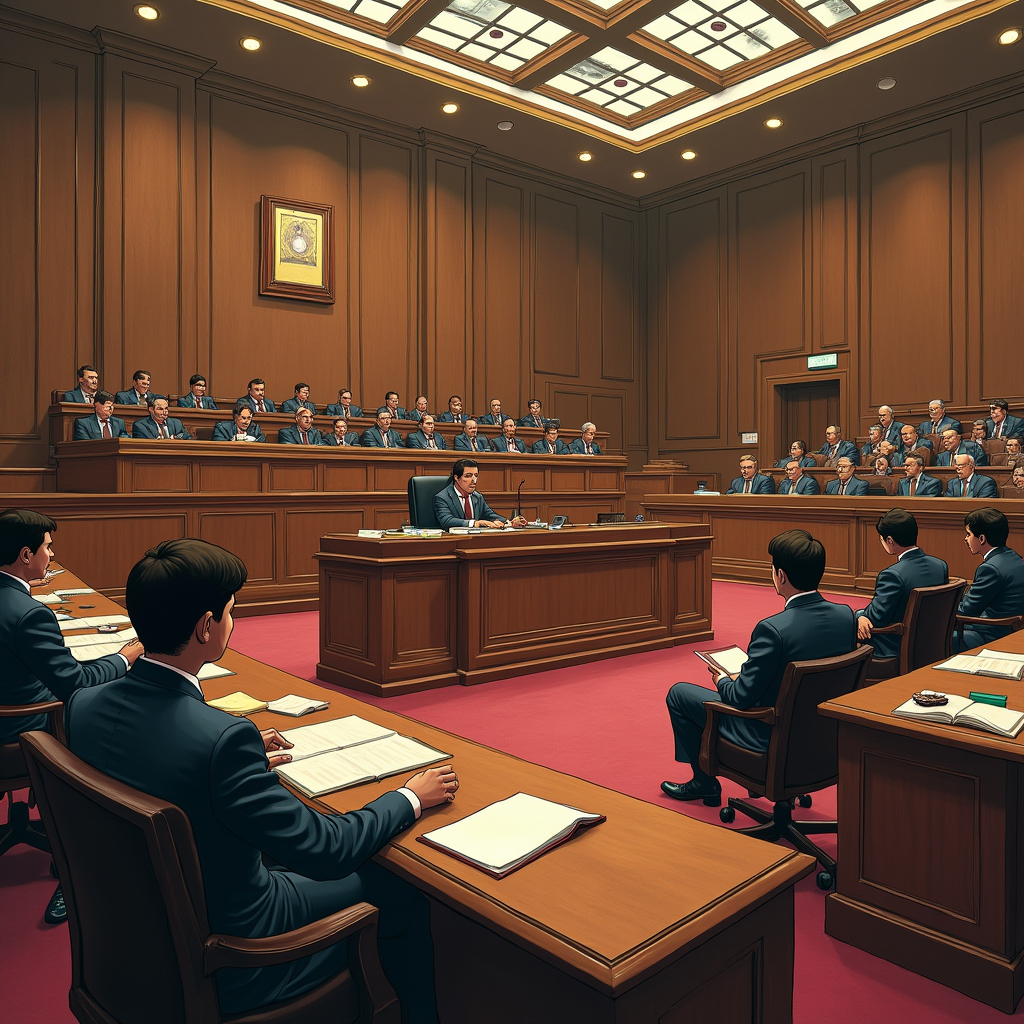
When it comes to the current scope of the power of the parliament to amend the Constitution, we can rely on the Basic Structure Doctrine, introduced in the landmark judgement of Kesavananda Bharati Sripadagalvaru vs. State of Kerala and anr. (1973). According to the judgement and the doctrine introduced therein, the parliamentary power to amend the Indian Constitution is wide. However, it is an absolute power and the parliament can never amend the Indian Constitution if the amendment changes the basic structure of the Indian Constitution.
Basic Structure Doctrine test
It was held in the landmark judgement of Kesavananda Bharati case (1973) that the Parliament held the powers of amend the Constitution, along with the fundamental rights, as long as the amendment did not affect any basic principle or the fundamental structure of the Constitution.
The basic idea behind introducing this basic structure doctrine was to keep control on the powers of the Parliament and to ensure that they did not alter or destroy the basic structure, that is, the true essence of our Indian Constitution. So, what exactly falls within the ambit of a basic structure doctrine? Which provisions of the Indian Constitution are not amendable at all? The answer to this has been obtained over the years through various judgements and precedents set by the Indian courts.
The landmark judgement also provided us with the test to consider which features fall within the ambit of the basic structure doctrine:
Supremacy of the Constitution
No matter the power, the Parliament must recognise that the final authority lies with the Constitution. It is the most important and the highest law of India. Thus, any amendment that undermines the supremacy that our Constitution has, will be considered as void.
Republic and democratic nature of India
India has been the world’s largest democracy. The constitutional provisions are the key aspects that protect this nature of our Indian republic. Thus, it is vital for the Constitution and for the maintenance of social order in India. Thus, it becomes an integral part of our Indian Constitution. Which means, in India, if at any point in time, a law is passed that threatens to mess up its democratic and republic nature, the law, to that extent, shall be held as invalid and unconstitutional. The Constitution (Thirty-ninth Amendment) Act, 1975 was an attempt by the Parliament to change these by amending the constitutional provisions in a way that limited the powers of the courts in India to decide on election and other related matters.
This issue was raised in the landmark case of Indira Gandhi vs. Raj Narain (1975). In this case, an opponent of Indira Gandhi in the elections decided to challenge her election on the grounds of malpractice. When this case was pending before the Allahabad High Court, the Parliament passed the 39th Amendment to the Indian Constitution. This can be considered a really smart move, as post this amendment, there was a limitation on the jurisdiction of courts to decide on the validity of elections of :
- President;
- Vice-President; and
- Speaker.
This action makes it one of the most important amendments to the Constitution of India, as the whole dispute was around the balance of powers, judicial review, and other such issues, which at the larger stand point were affecting the democracy of our country. In this case, the Supreme Court held the 39th Amendment to be unconstitutional and void as it was against our democratic principles.
Secular character of the Constitution
The most attractive feature of our nation is the secularism it follows, which also forms a part of the basic features of our Constitution. Hence, any changes that affect or threaten secularism in our nation are also considered a change to the basic structure and, hence, are considered invalid.
S.R. Bommai vs. Union of India (1994) is one of the most important judgements while considering the secularism of our nation and its status as a basic feature of the doctrine. The former Chief Minister (CM) of Karnataka, S.R. Bommai was dismissed and the President’s rule on the state was imposed.
In fact, this was not the only instance of dismissal of the state government. In many states of India, the Centre had dismissed the state governments on various allegations, such as them trying to preach non-secular practices, and by stating that there was an instability in the state. These dismissals were then challenged in the Supreme Court. One of the major issues involved in the case was pertaining to the fact that whether or not the government of a state could be dismissed on the grounds that they were promoting non-secular activities and whether or not secularism fell within the definition and scope of the basic structure doctrine.
It was then that the Supreme Court confirmed secularism as a part of the basic or feature of the Constitution of India. The hon’ble bench held that any action of the government of India, whether central or state, will be invalid and unconstitutional if it affected the principles of secularism in our country in any manner. In furtherance of this, it was also held that a state government could be dismissed if it was not performing its functions in line with the principles of secularism.
Separation and balance of powers
The nation of India stands on three pillars, the legislative, executive and judiciary. Each of these bodies has their roles to perform. This separation helps in maintaining democracy in India. If the powers are combined, instead of keeping them separate, a group of individuals will get the power over the functioning of the entire nation.

In fact, the way that the constitutional amendment has panned out until now is also a great reminder for why the separation of powers is a must. Not just that, even an imbalance in these powers can disrupt the democratic and federalist nature. Hence, the separation of powers and its balance is also an integral aspect of the Constitution.
According to this, if any legislation affects this balance of separate powers, it is invalid and unconstitutional. This issue was discussed further in the case of Minerva Mills vs. Union of India (1980), while determining the validity of amendments to Article 368 under The Constitution (Forty-second Amendment) Act, 1976.
Federal character of the Constitution
The federal characteristic of India means that the Constitution protects and respects the balance and the division of powers between the central and state governments. Both are set to work independently of each other.
Judicial review
After the Kesavanada Bharati case, the power of the court or judiciary to review the laws was again brought into dispute through a constitutional amendment and was further discussed in the landmark judgement of Minerva Mills vs. Union of India (1980). In this case, the Supreme Court had once again held that the power of judicial review was one of the basic features of the Constitution as it was a part of the federal nature and protected the separate powers of the three pillars. Hence, it was held that judicial review powers are also within the scope of the basic structure doctrine.
Landmark precedents
Sri Sankari Prasad Singh Deo vs. Union Of India And State Of Bihar (1951)
Facts of the case
Post independence the authorities started focusing on the Agrarian Land Reform Acts. While the acts were held to be valid and legal in the states of Allahabad and Bhopal, the Patna High Court passed a judgement to declare the Bihar Land Reforms Act 1950 unconstitutional.
This sparked controversy and with an aim to eradicate the decision of the Patna High Court, First Amendment Act was passed.
The present case was filed to challenge the validity of this amendment. It was challenged on the ground of violation of the fundamental right to property and the provision of Article 13(2).
Issues Raised
As a result, three important issues were dealt with in the case:
- whether the Parliament has the authority to amend the Constitution?
- whether or not the fundamental rights be amended or changed? and
- the determination of the scope of applicability of Article 368.
It was the first time in the nation that these issues were being discussed. Moreover, the strike differences in the Articles 13 and 368 were leading to conflicts. While the Parliament was given power, Article 13 was also restricting it.
Judgement
In this judgement, the court did take a closer look at the conflict between Articles 13 and 368. To deal with this conflict, in this decision, the court relied on the doctrine of harmonious construction, which means that whenever there is conflict between two provisions, the court must try and create a harmony between the provisions, rather than cancelling one out as a void provision.
It was held that the first amendment was valid and the scope of Article 13 is limited to ordinary laws and not constitutional laws. They stated that the term law referred to in Article 13, was not extended to the constitutional laws and its amendment, as a result of which, a law made under Article 368 to amend the Constitution could not be challenged under Article 13.
Sajjan Singh vs. State Of Rajasthan (1965)
As we’ve seen the earlier constitutional amendments happened mostly for socio-economic development, and land reforms were seen as a major part of the same. After the 17th Constitutional Amendment Act was passed, and more laws were added to the Ninth Schedule of the Constitution, this case took place. A total of six petitions, including the one filed by Sajjan Singh was filed by the court to protect the right to property and challenge the validity of these reforms.
Facts of the case
The petitioner in this case, Sajjan Singh, was a former ruler of the Princely State of Ratlam in pre-independence India. After the independence, Sajjan Singh and the Indian Union Government had entered into an agreement to allow him certain specific land ownership rights.

In 1964, when the 17th Constitutional Amendment was enacted, it brought about a lot of changes to the Constitution, specifically to the balance of power between state and centre, and the ninth schedule was broadened to add land reform legislations and provisions.
This Act also impacted the land ownership rights granted to Sajjan Singh, as a result of which, he challenged the constitutional validity of the 17th Amendment Act before the Supreme Court, on the grounds that it violated his special privilege and right to property granted under the Constitution, as well as the agreement signed with the Indian Union.
Issues Raised
The two important issues dealt in this case were:
- Whether or not the power of Parliament under Article 368 applied to the fundamental rights or not; and
- Whether the inclusion of the ninth schedule to protect the land reform laws violate the basic structure of the Constitution.
Judgement
In this case, the Supreme Court decided in favour of the law and upheld the constitutional validity of the 17th Amendment Act. Hence, the decision of the previous case was also upheld, and the Supreme Court had stated that as long as Article 368 provided this power, the Parliament was free to amend any part of the Constitution including the fundamental rights.
It was decided in a 3:2 majority by the bench that since the restriction under Article 13 applied to a ‘law’ and while the amendments to Constitution were not the law, the power of parliament could not be restricted through Article 13.
However, an interesting aspect of this case also revolves around the viewpoints of the minority judgement holders of the Bench, who were of the view that this power can be abused by the Parliament to alter or change or even destroy the basic structure of the Constitution.
I. C. Golaknath & Ors vs. State Of Punjab & Anrs. (1967)
Another case filed to question the validity of the 17th Constitutional amendment, where the landowners in Punjab had challenged it on the ground that it impacted their right to property.
Facts of the Case
When the Punjab Security of Land Tenures Act, 1953 was passed by the Punjab state government, it put a limit on the lands owned by families in Punjab. Henry Golakhnath, such an individual, had to give away a major chunk of his land to the state government as it was surplus as per the provisions of the Act. The ownership of the excess land was to be transferred to the government.
As a result of this, the Golalkhnath’s approached the Supreme Court, along with other such aggrieved petitioners to question the validity of the Act passed by the Punjab government.
Issues Raised
The following issues were discussed in the case:
- Whether or not the Parliament had power to amend the fundamental rights in Part III of the Constitution;
- Whether an amendment of the Constitution be considered as a law which falls in the scope of judicial review; and
- Whether an amendment of the Constitution would amount to a constitutional law or ordinary law.
Judgement
In a landmark judgement, with a thin majority, the Bench had held that the power of Parliament to amend the Constitution was not absolute, and had certain limitations. Moreover, the SC also observed that an Act passed to amend the Constitution under Article 368 would be considered as an ordinary law and not a constitutional law. As a result, if the changes proposed in the constitutional amendments were violative of Article 13, it would be held as invalid.
This was the first time in the Indian courts that this point of view got a majority vote with respect to the limit on parliamentary powers to change the Constitution. As a consequence of this Judgement, the Constitution had to go through a major amendment, ie., the 24th Constitutional Amendment, which if you recall correctly, amended Article 367 of the Constitution in a way that provided Parliament explicit powers to amend any of the part of the Constitution of India, including the fundamental rights.
One can say that this case set a platform for the case of Kesavananda Bharati, wherein the basic structure doctrine was introduced.
Kesavananda Bharati vs. State of Kerala (1973)
Land reform laws in India aimed at limiting the amount of land owned by a particular person, and to do away with the inequality in the ownership of property caused due to the age-old system of zamindari. However, these laws also hampered the right to property of individuals.
The constitutional validity of the Land reform laws was also brought up in the most historical judgement in the constitutional law history, that is, the Kesavananda Bharati case. Early on after independence, the focus of the government was to abolish the zamindari system. For furtherance of which, land reforms were enforced by various central and state legislatures. One such legislature was challenged by the head of a religious institution, Sri Kesavanada Bharati, when the ownership of their land was taken away by the Kerala state government. This decision of the government was upheld by the court, as the law was in accordance with the provisions of the Constitution.
Yet, undefeated, the petitioner decided to take another shot, and challenged the amendments to the Constitution of India, on the grounds that the basic structure of the Constitution was against these changes. This is what led to the inception of the basic structure doctrine.
As seen above, in the previous cases, the court had started emphasising on the basic structure of the Constitution. However, it took an active effort, a petition to the court to bring this change into action.
Facts of the case
The petitioner in the present case, Shri Galvaru Kesavanada Bharati, was a leader of the Edneer Mutt, which is a religious sect in a district of Kerala. From the plot owned by the sect, the petitioner was an owner of a certain part of the land used for religious purposes. In 1969, when the Kerala state government introduced the Kerala Land Reform Amendment Act, it allowed the state government to acquire certain parts of land from the Edneer Mutt, religious sect.
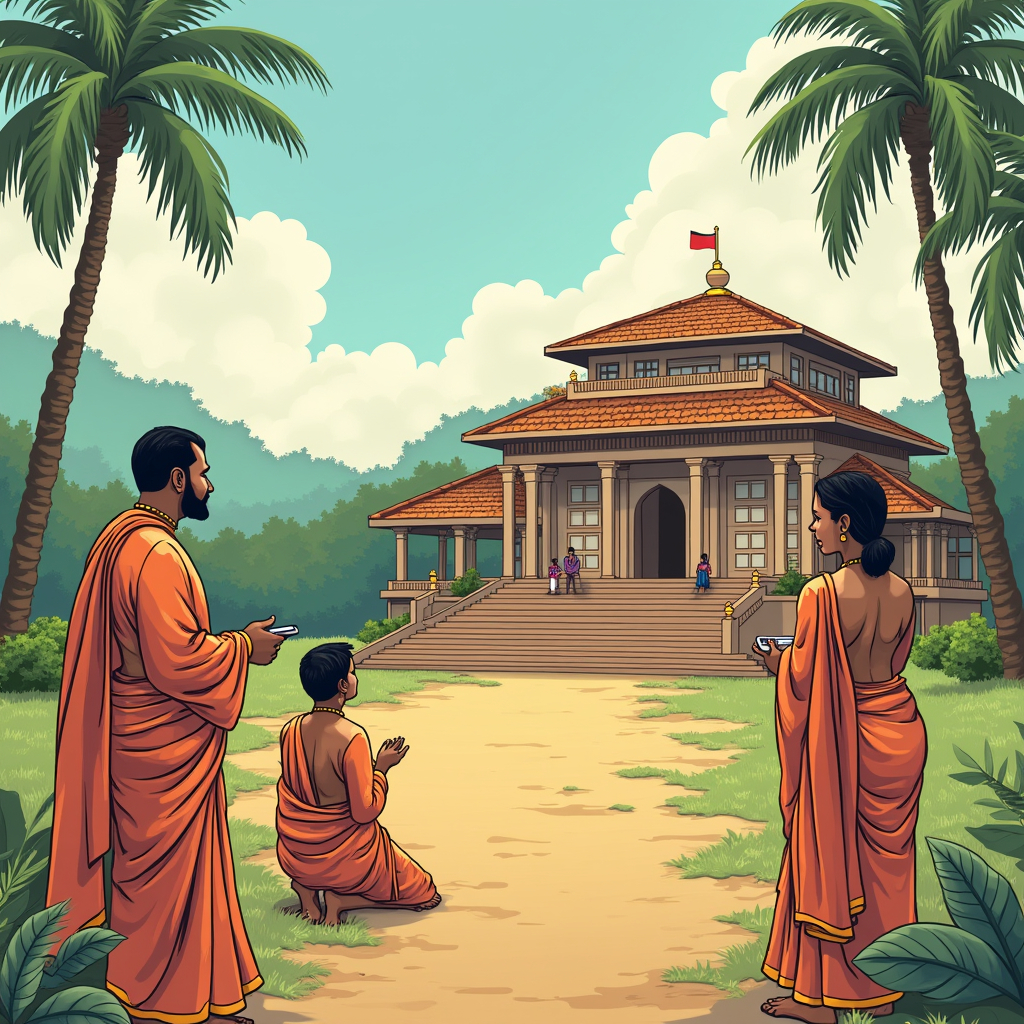
As a result of this, Shri Kesavanada Bharati filed a petition under Article 32, before the Supreme Court of India in 1970 March. While this petition was ongoing, in 1971, the Kerala government enacted another law entitled the Kerala Land Reforms Amendment Act of 1971. The objective of the petition was to enforce his basic right to practise his religion and administer it with ease.
Issues Raised
As one of the most important precedents, that shaped the way the Constitution of India is amended, was decided on the basis of the following issues:
- Whether or not the Kerala Land Reforms Act was constitutional and valid?
- Whether the power of Parliament to amend the Constitution under Article 368 was absolute or not?
- Whether the doctrine of basic structures is also a part of the Constitution? and
- whether or not, the power of parliament to amend the Constitution extends to the basic structure doctrine?
Judgement
After careful consideration of the ongoing situation, facts, the precedents, and the Supreme Court in a 7:6 majority decision, established the constitutional validity of the basic structure doctrine. Thus, it was finally decided through this landmark judgement that the basic structure doctrine was an integral part of the Constitution, and could not be amended in any way.
This also put a stop to the question of limitation on power of Parliament to amend the Constitution. Thus, we can see how this judgement, delivered over 50 years ago, still resides in our hearts, still speaks volumes to us, for the protection of the principles of democracy and the rule of law in India.
After this judgement was passed, the entire course of the constitutional amendments also changed and it also served as a stark reminder of the presence of democratic principles in the legal framework within India.
Minerva Mills Ltd. vs. Union Of India (1980)
After the Kesavanada Bharati case, the Indian courts started recognizing the basic structure doctrine. The Minerva Mills case happened subsequently, when the mills were nationalised by the sick nationalisation Act. This case became one of the landmark judgements in the history of constitutional amendments as well because it was in this case that the Supreme Court provided clarification about the doctrine after its inception.
The interesting part of the judgement was an observation of the Supreme Court that since the doctrine limited the parliamentary power to amendment, any alteration to change this limit and grant itself an unlimited power would be not valid. Consequently, the Supreme Court struck down two clauses of the 42nd amendment act, which were imposed during the emergency. Let us check out the facts, issues and judgement in brief.
Facts of the case
In 1974, the Parliament had passed the Sick Textiles Undertakings (Nationalisation) Act. The objective of this Act was to nationalise the textile companies and improve its development. The action was made in the name of a wide and public interest, ie., to benefit the society at large. The idea was to make goods affordable for all. Minerva Mills was also a textile company, since it fell in the silk manufacturing categories, as per this act, they had to undergo nationalisation. As a result of which, the petitioner came before the court to contest the validity of the Act.
Issues Raised
Two important issues were raised in this case on the constitutional validity of:
- Section 4 and Section 5 of the 42nd Amendment Act, 1976; and
- Whether or not, sub clause 4 and 5 of Article 368 were constitutional and valid.
Judgement
With a 4:1 majority, the decision of holding the sections 4 and 5 of the 42nd Amendment were made. The bench held that Article 31C was amended by Section 4 in such a way that it gave the DPSPs supremacy and power. Moreover, Article 39(b) and ( c) were also amended to protect the Sick Textile Act from being challenged in the form of judicial review, for the violation of fundamental rights. Moreover, after reading Article 368(5), they even stated that any provision or law which provides the state an infinite power or authority is not valid and unconstitutional.
I.R. Coelho vs. State of Tamil Nadu (2007)
Facts of the Case
Admission of laws that were previously held as unconstitutional or arbitral, to the ninth schedule of the Constitution, post amendments was quite evident.
For instance, in an older judgement, the Supreme Court declared the Gudalur Janmam Estates (Abolition and Conversion into Ryotwari) Act, 1969 as void in 1972. However, after the passing of the 34th Constitutional Amendment.
Even a similar decision of the Calcutta High Court, of holding Section 2(c) of West Bengal Land Holding Revenue Act, 1979 as arbitral was somehow overturned, when the 66th Constitutional Amendment Act, 1990 inserted that Act to the Ninth Schedule.
While referring to the judgement passed in the case of Waman Rao and Ors. vs. Union of India (1981), a five-judge Constitution bench, in 1999 held that the laws being added to the 9th schedule, could be challenged on the grounds of violation of fundamental rights, if they were passed after April 24, 1973.

Hence, the 9 judge bench of the Supreme Court was assigned to re-examine this decision and provide the proper and final standing on the position of judicial review.
Issues Raised
Originally, the ninth schedule was inserted to the Constitution to bring about changes that would be in furtherance of the social welfare and would help in achieving the DPSPs and contained around 13 laws revolving around land reforms.
However, with time, many laws which violated the fundamental structure of the Constitution were being inserted to the ninth schedule, and the protection over judicial review was also extended to such laws. Before this case, more than 200 laws were a part of the protection provided by the ninth schedule, including topics like reservation and trade.
Hence, there was a dire need to make a strong ground on the power of judicial review. With this in mind, the following was the primary issue discussed in the case:
- Whether or not all laws put in the ninth schedule after the judgement of the Kesavanada Bharati case was passed, would the laws inserted in the ninth schedule be protected from judicial review, even if they were violating the fundamental rights or the basic structure of the Constitution?
Judgement
A 9 judge bench of the Supreme Court, passed a unanimous judgement in this case when the power of judicial review of the court was in dispute again. In January 2007, while delivering this judgement, the Supreme Court confirmed the supremacy of the basic structure doctrine. Also, they extended this applicability to the 9th Schedule and held that even if a law was protected under the list of 9th schedule, it was still open to review from the judiciary, if there was any doubt or scope of the law not being in accordance with the basic structure and the fundamental rights.
They even emphasised on the restriction to the power of parliament to make laws, and stated that even Article 368 must safeguard the basic structure and essence of our Constitution.
Conclusion
India as we know today, would be a distant dream if not for the changes that our legal framework has gone through. What would have happened if there was never an amendment to the Constitution at all? It could have resulted in an India where the freedom of speech and expression did not have a single restriction or where there were no special provisions to protect the weaker sections of the society.
When we talk about the entire journey of the constitutional amendments , we can say that they have definitely brought great changes to the framework of India. Out of the total 106 amendments enacted until this day, many have also led to disruptions, whereas many of the amendments have actually helped in the development of our country and all of its people.
However, the most impactful part is that through this journey we have seen both positive and negative impacts of the important constitutional amendments. Before parting, let’s summarise the list of changes seen throughout the year through constitutional amendments;
- Many times abuse of power was seen. However, due to the federal nature of our nation, it has been overcome by creating a balance of power;
- Socialist and Secular, and Integrity words were added in the Constitution; and
- Power of Parliament and the Judicial review were two major reasons of conflicts in most of the constitutional amendment;
- Steps have been taken to protect the EWS, SEBC, SCs and STs, children and women;
- Fundamental duties have been imposed and a lot more.
The aspect that makes the constitutional amendments important is either a socio-economic change, or an amendment that disrupts the status of India as a free democracy and tarnishes its basic principles by an imbalance in power between the judiciary, legislature and executive.
Frequently Asked Questions (FAQs)
Why are constitutional amendments important?
amendments mean change. In India, no law can be passed, unless and until the Constitution provides for it. With changing dynamics of the nation, its legislative framework has to be changed too which is only possible through amending the provisions of the Constitution in certain cases.
Which amendment is known as the mini-constitution of India?
The 42nd Constitutional Amendment is the mini-constitution of our country. The reason behind this being, the fact that the amendment was one of the most lengthy constitutional amendments and made changes to many provisions of the Constitution.
In which year were the terms Socialist, Secular and Integrity, inserted to the Preamble of Indian Constitution?
To bring a socio-economic change in the nation, the three terms mentioned above were proposed to be added to the Preamble, making them the basic elements of the Constitution in the year 1976. The law that gave effect to this was the Constitution (Fourty-Second) Amendment Act, 1976)
Does the power of Parliament under Article 368 provide absolute power to amend the Constitution?
No, this power to the Parliament is definitely not absolute. Even though, in the early amendments, it was believed to be so. However, at later stages, with multiple cases of the same accord (see above), the courts started observing the article more deeply, and thus, limited the power of Parliament, by introducing the basic structure doctrine, which has supremacy over the power of the Parliament.
References
- https://www.idea.int/sites/default/files/publications/constitutional-amendment-procedures-primer.pdf
- https://www.india.gov.in/my-government/constitution-india#:~:text=The%20Republic%20is%20governed%20in,force%20on%2026th%20January%2C%201950.
- http://constitutionofindia.etal.in/article_031a/#:~:text=31A.-,Saving%20of%20laws%20providing%20for%20acquisition%20of%20estates%2C%20etc.,of%20any%20such%20rights%2C%20or
- Constitution Amendment in India, R.C. Bhardwaj
- https://loksabhadocs.nic.in/Refinput/Research_notes/English/Re_org_English.pdf
- https://articles.manupatra.com/article-details/A-Case-Analysis-Shankari-Prasad-v-Union-of-India-Supreme-Court
Students of Lawsikho courses regularly produce writing assignments and work on practical exercises as a part of their coursework and develop themselves in real-life practical skills.
LawSikho has created a telegram group for exchanging legal knowledge, referrals, and various opportunities. You can click on this link and join:
Follow us on Instagram and subscribe to our YouTube channel for more amazing legal content.
 Serato DJ Crack 2025Serato DJ PRO Crack
Serato DJ Crack 2025Serato DJ PRO Crack


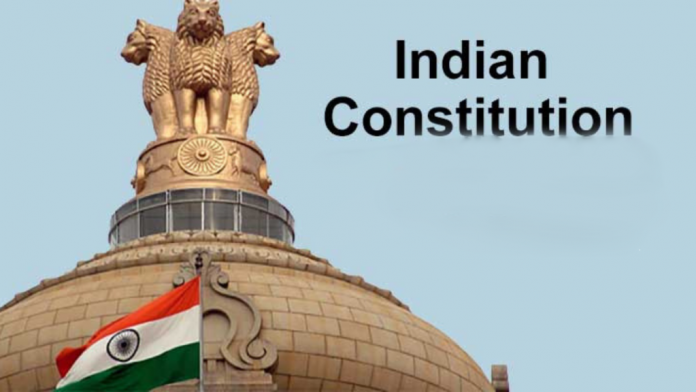







 Allow notifications
Allow notifications



